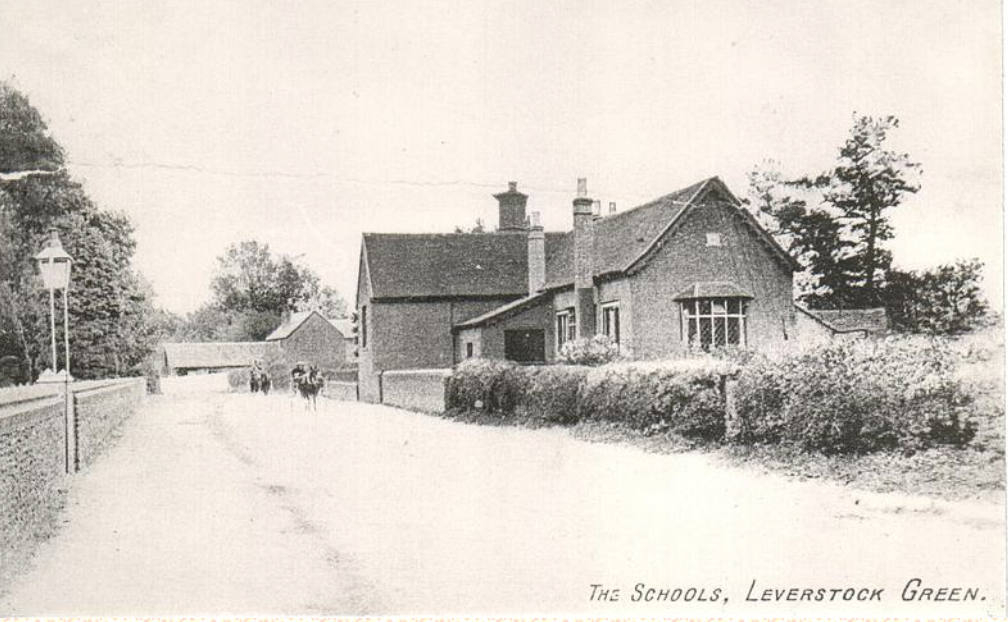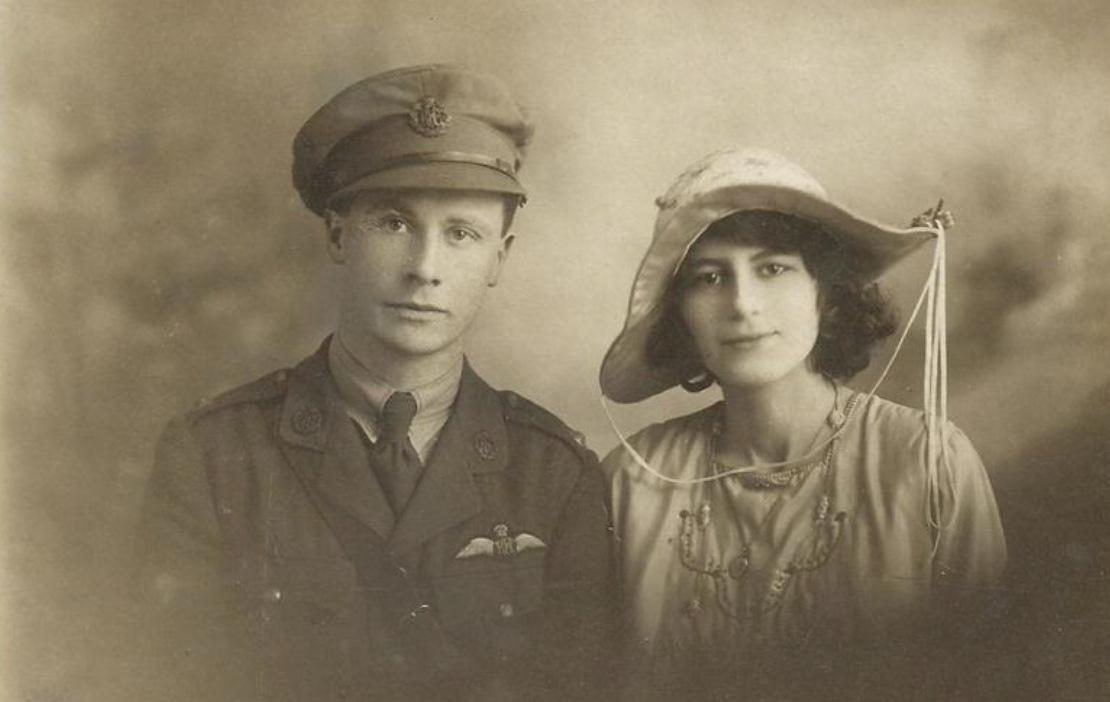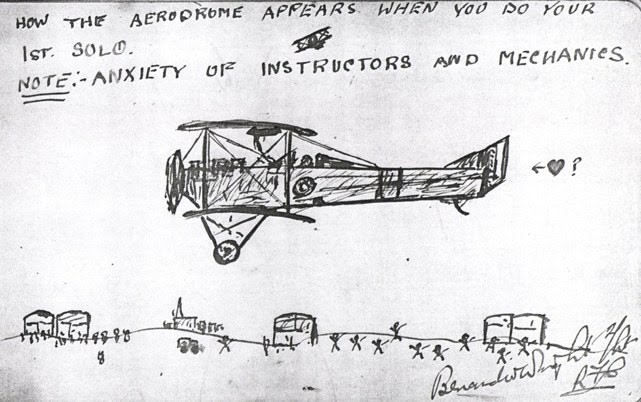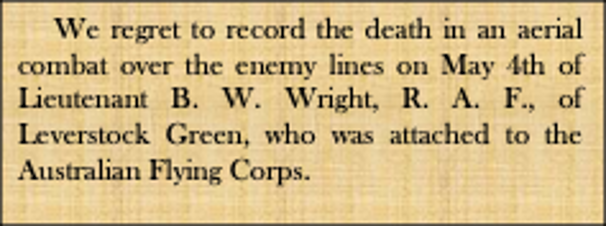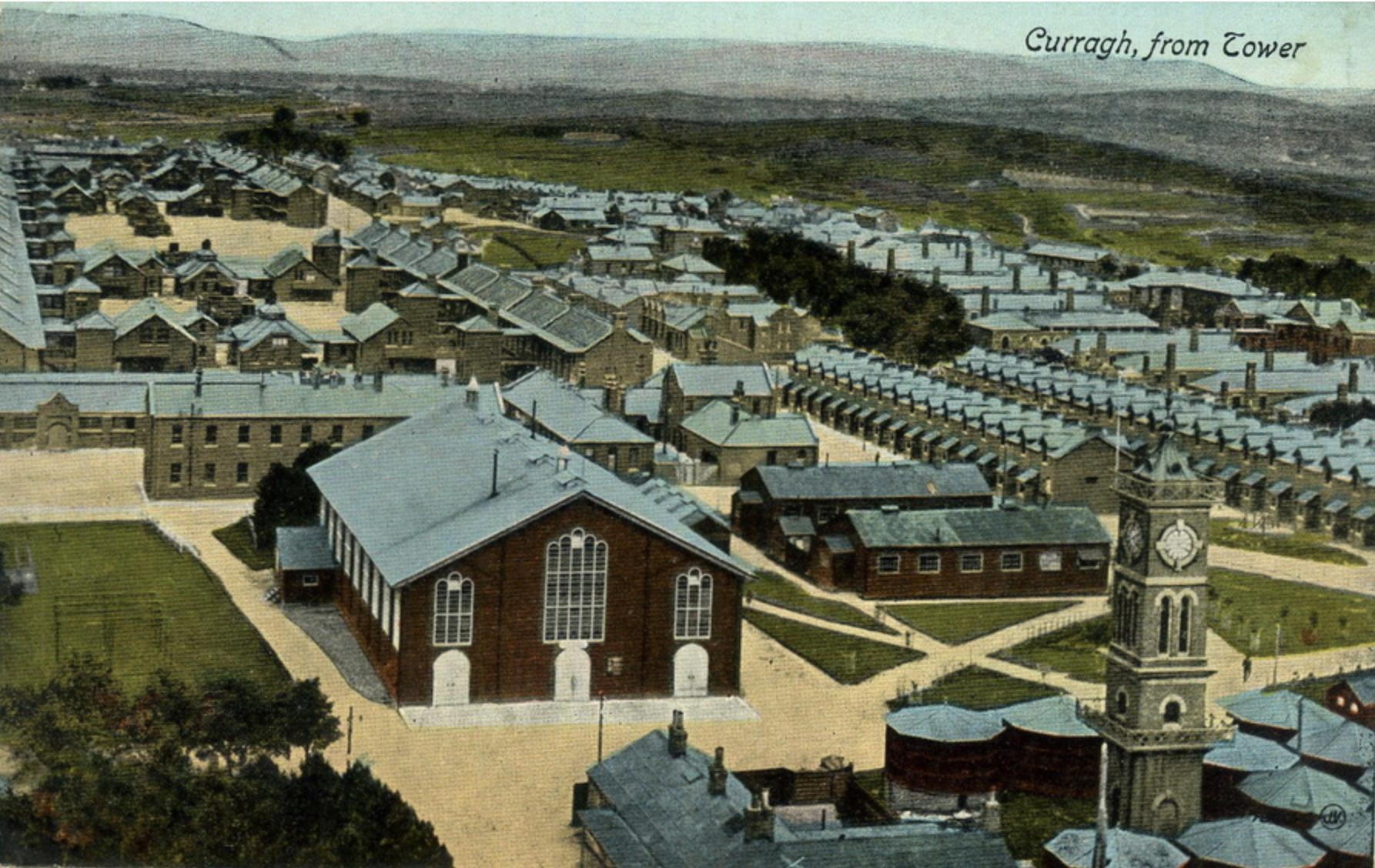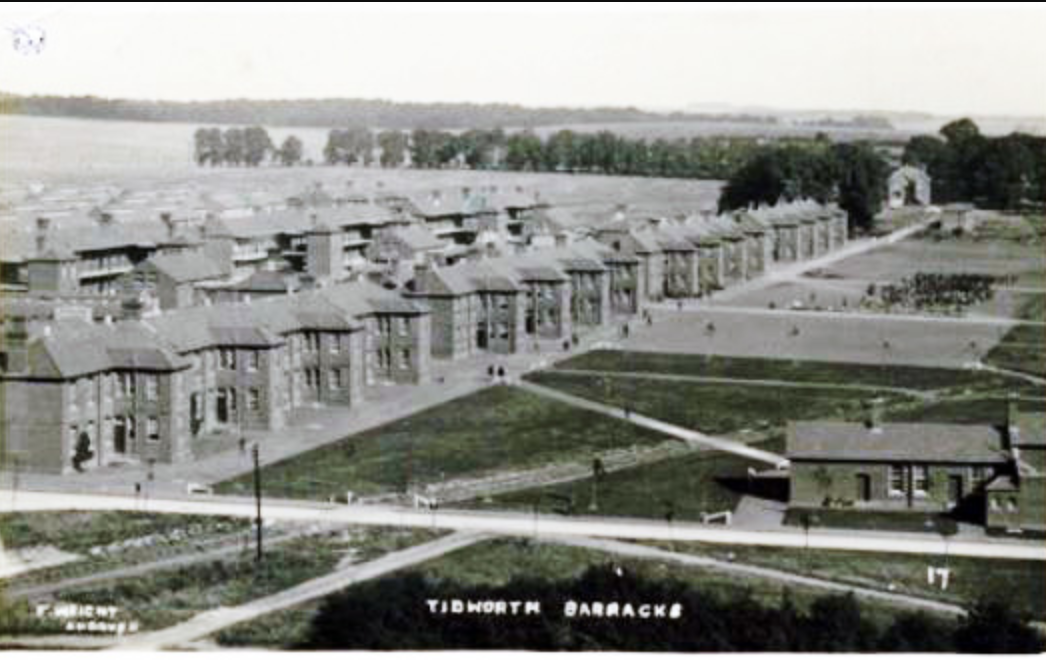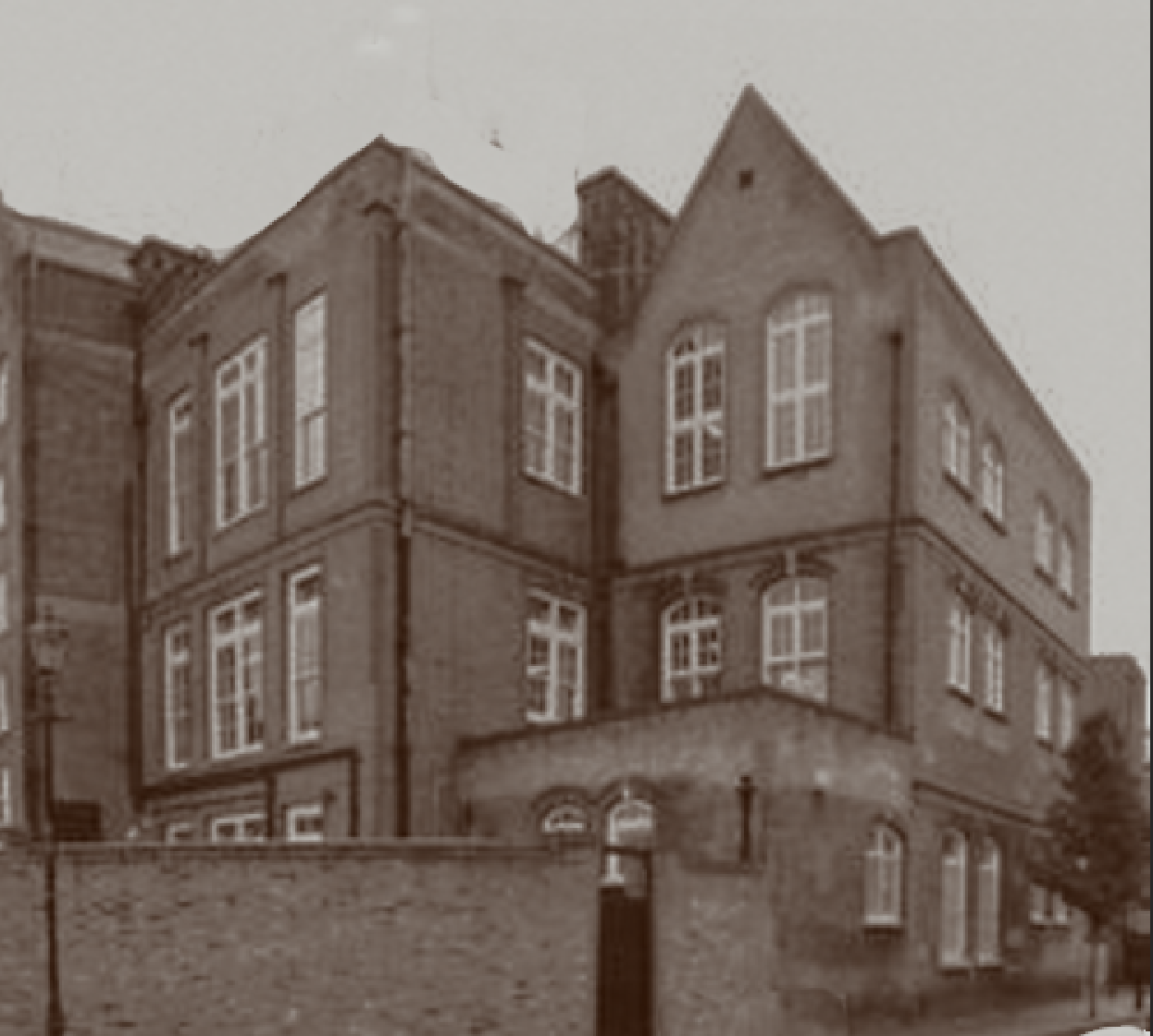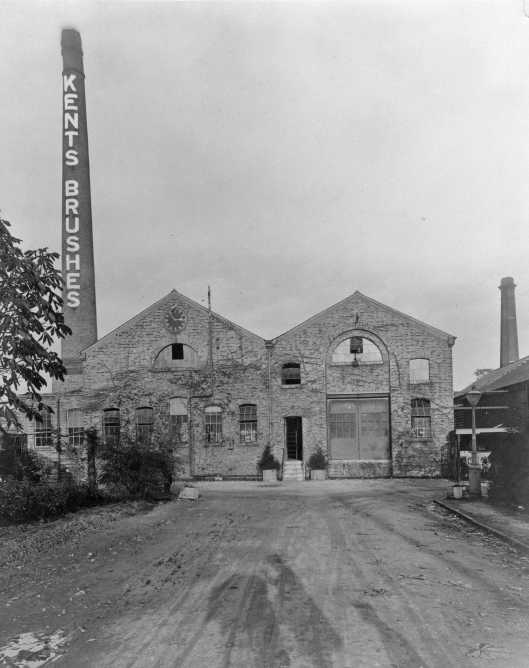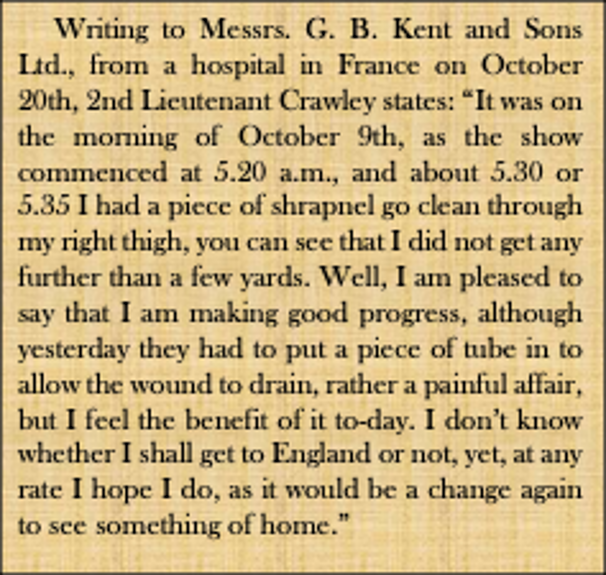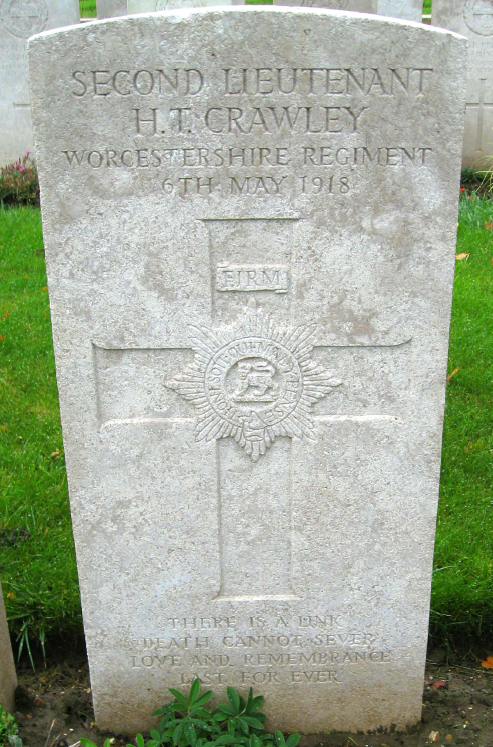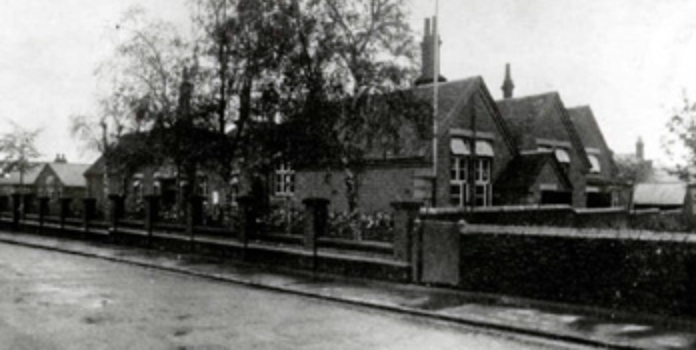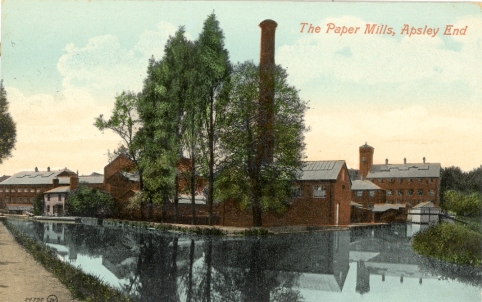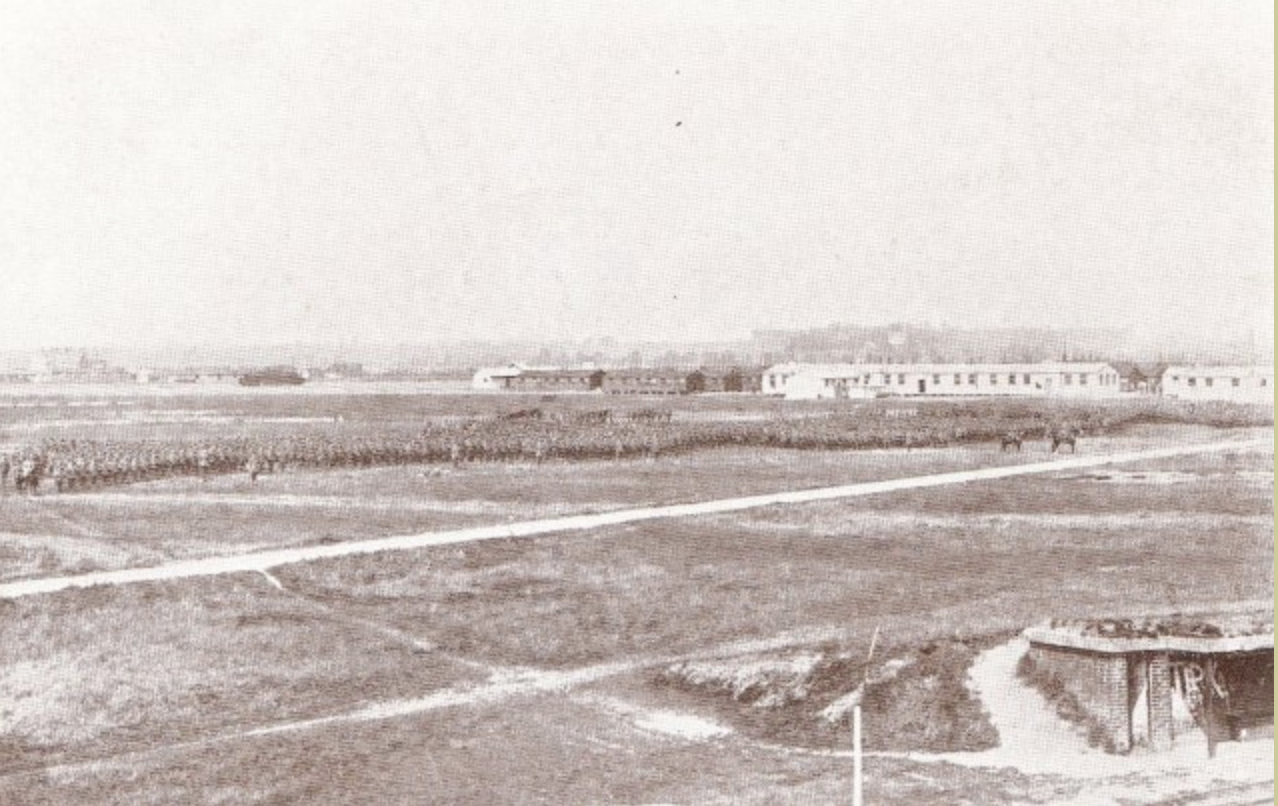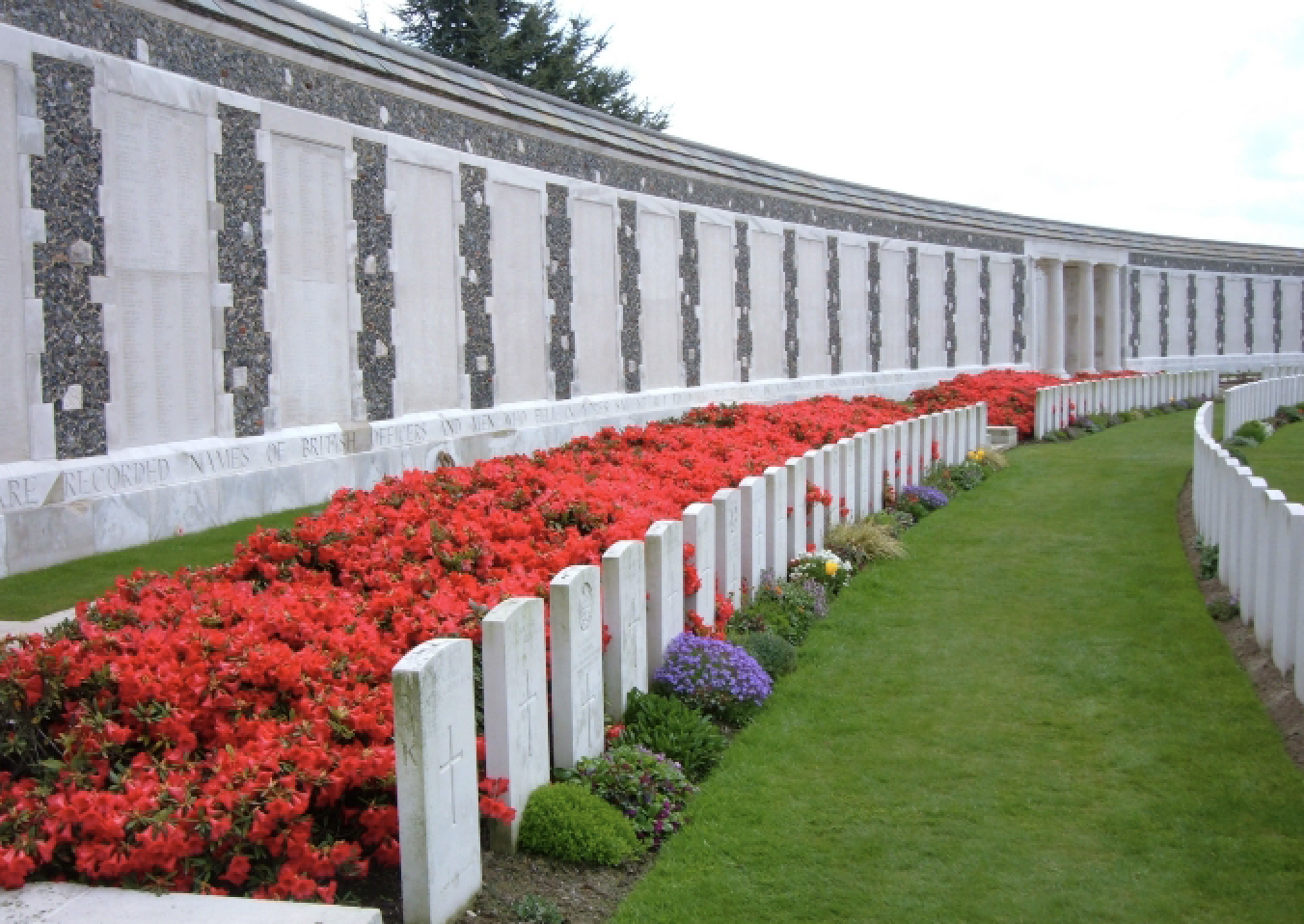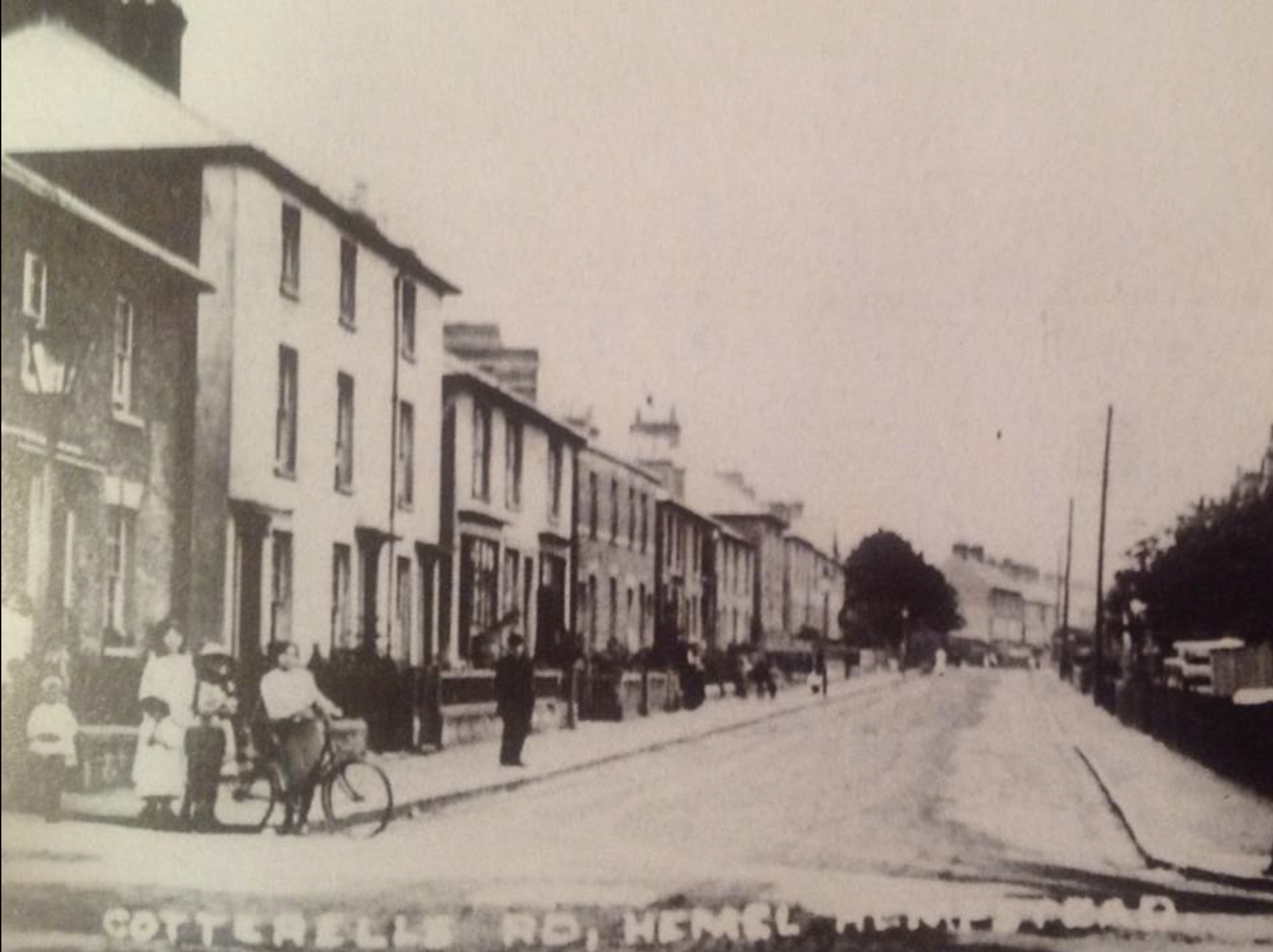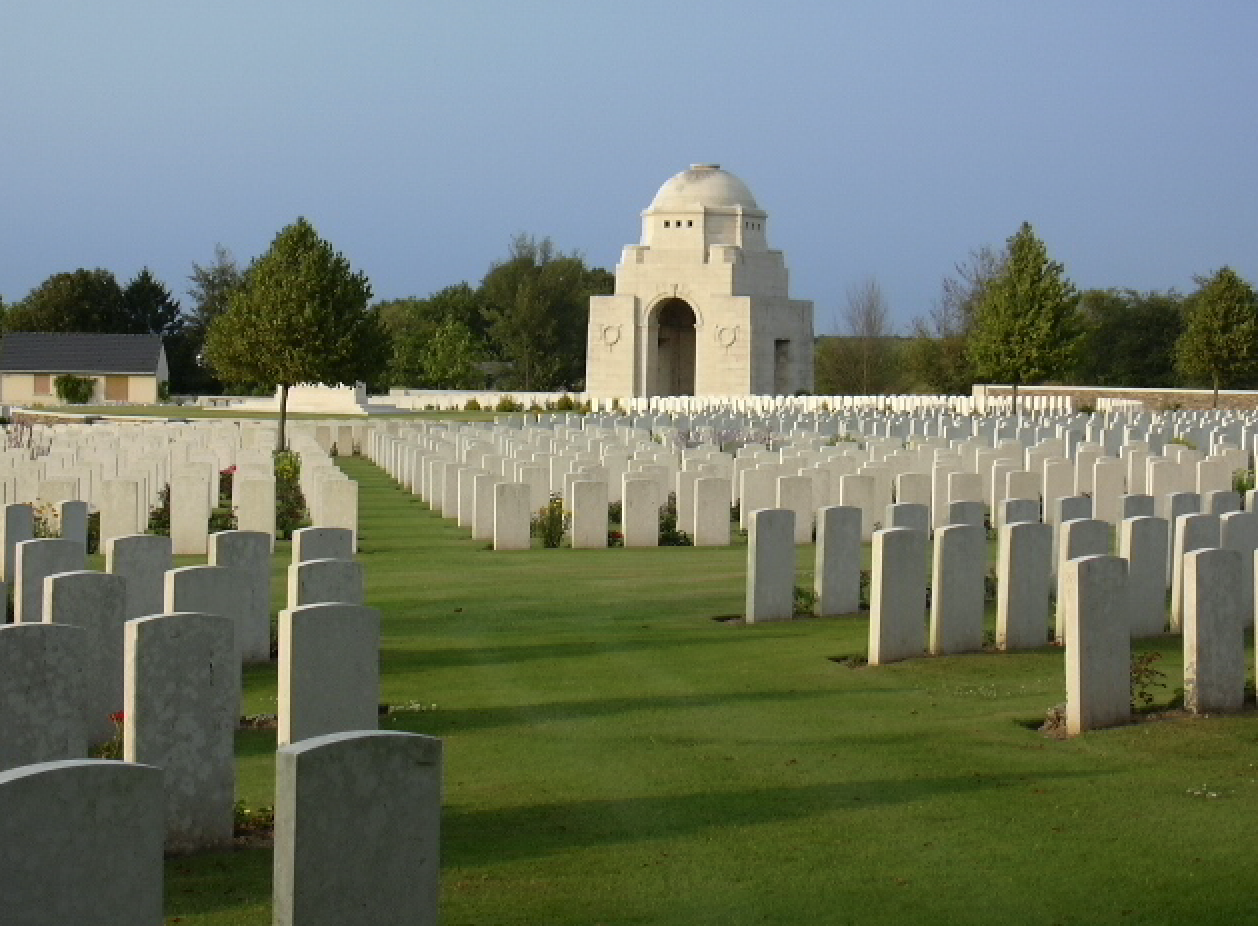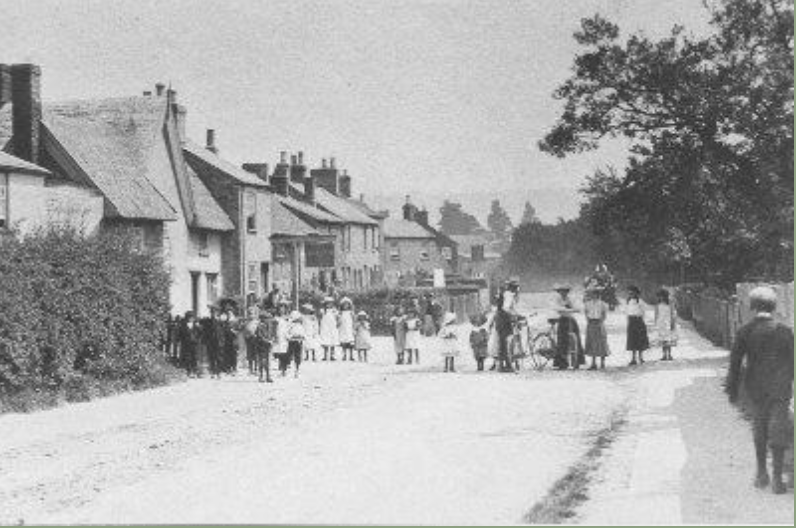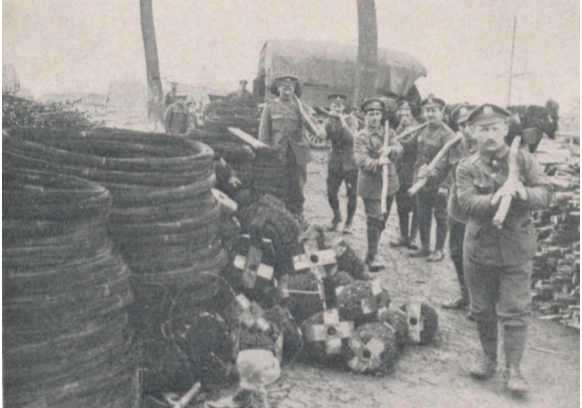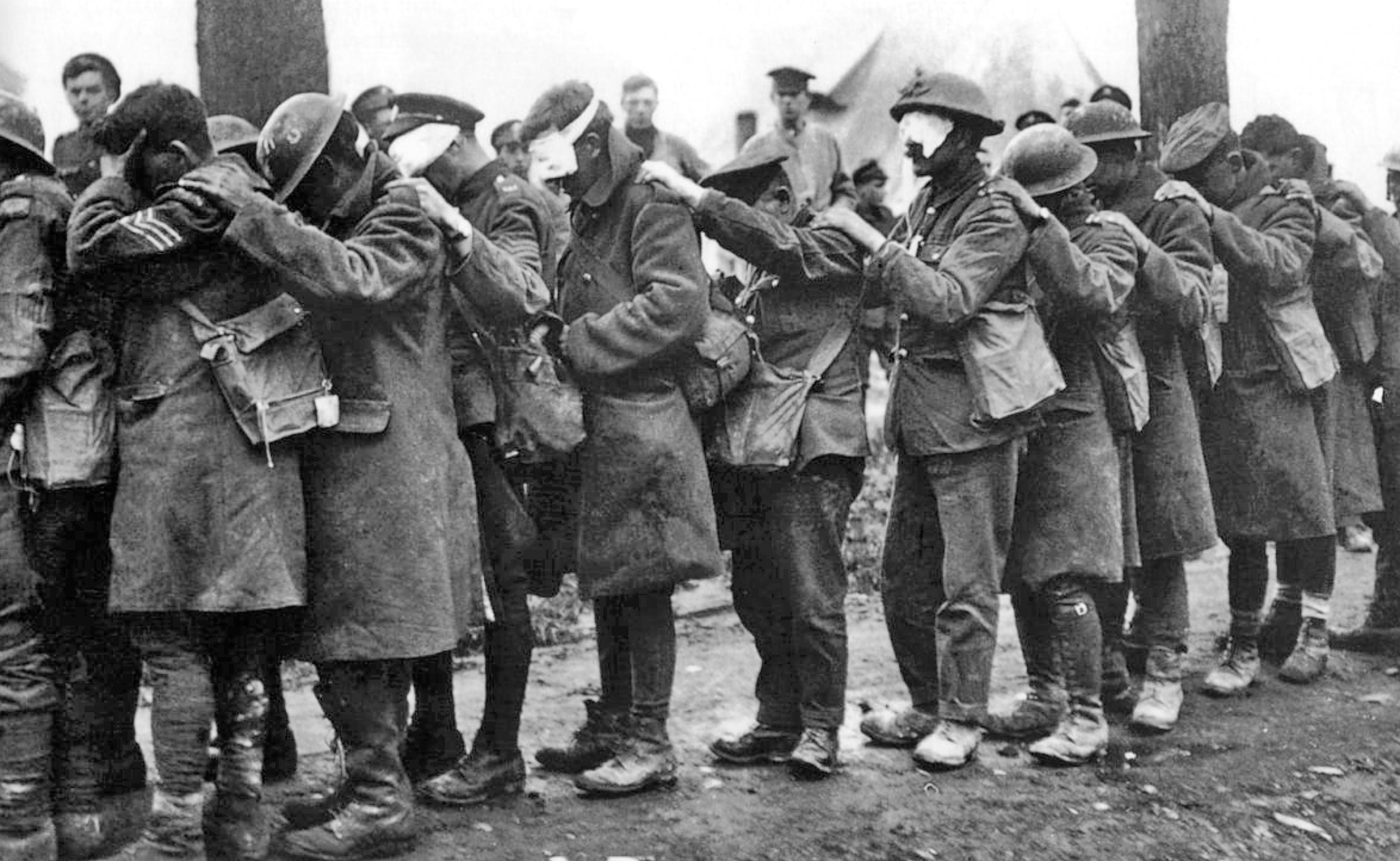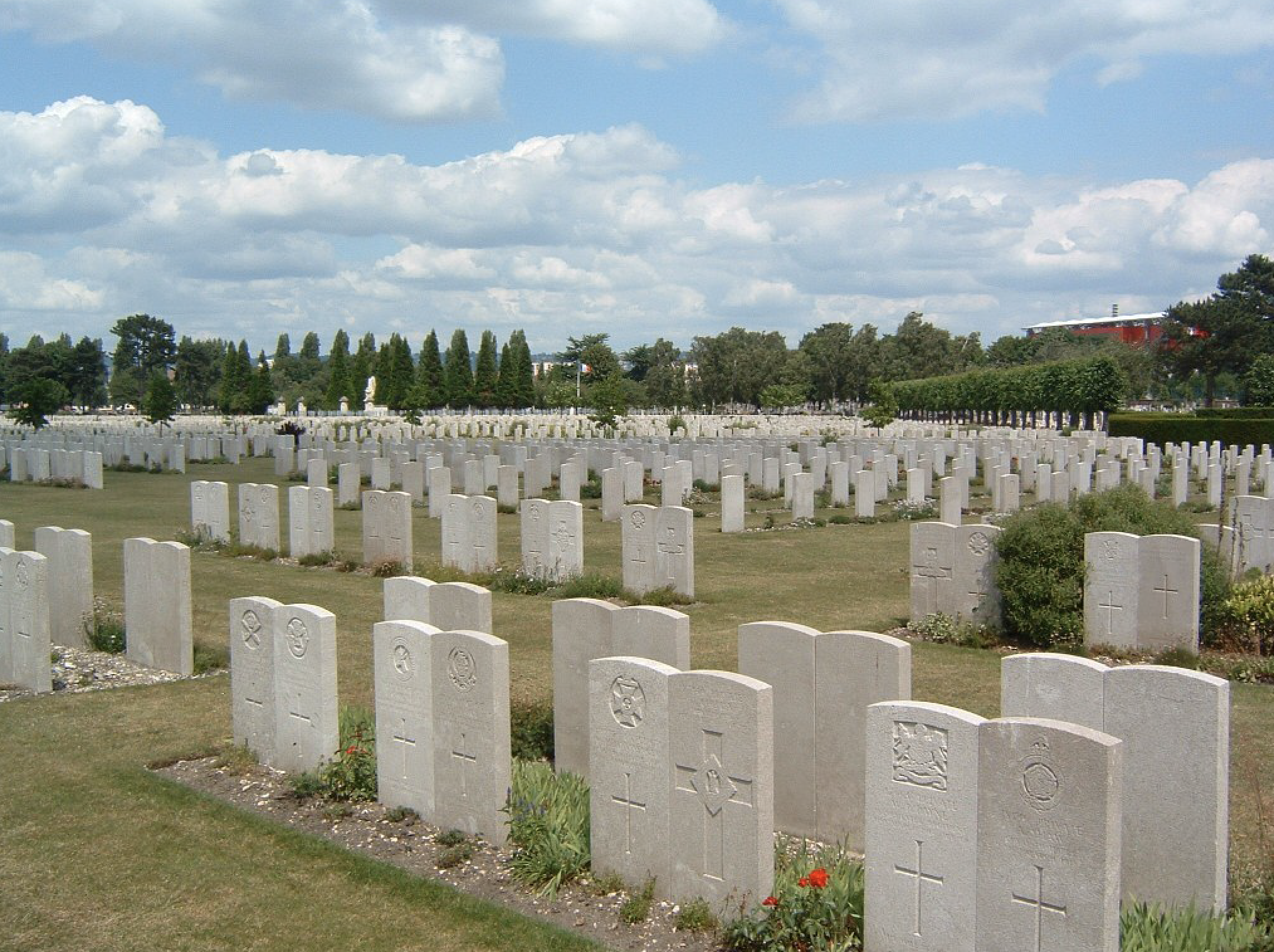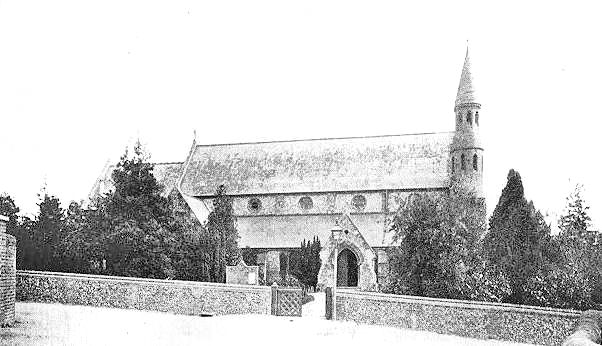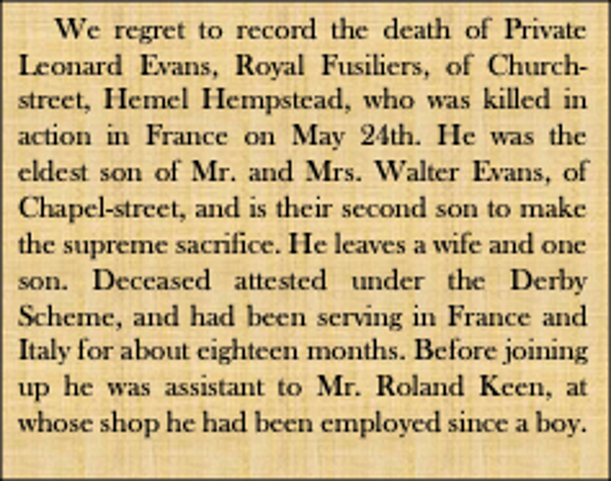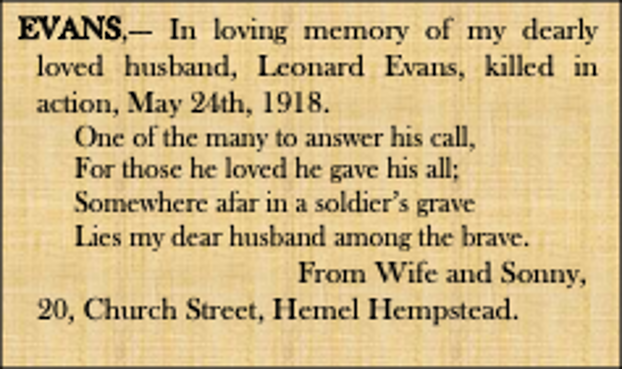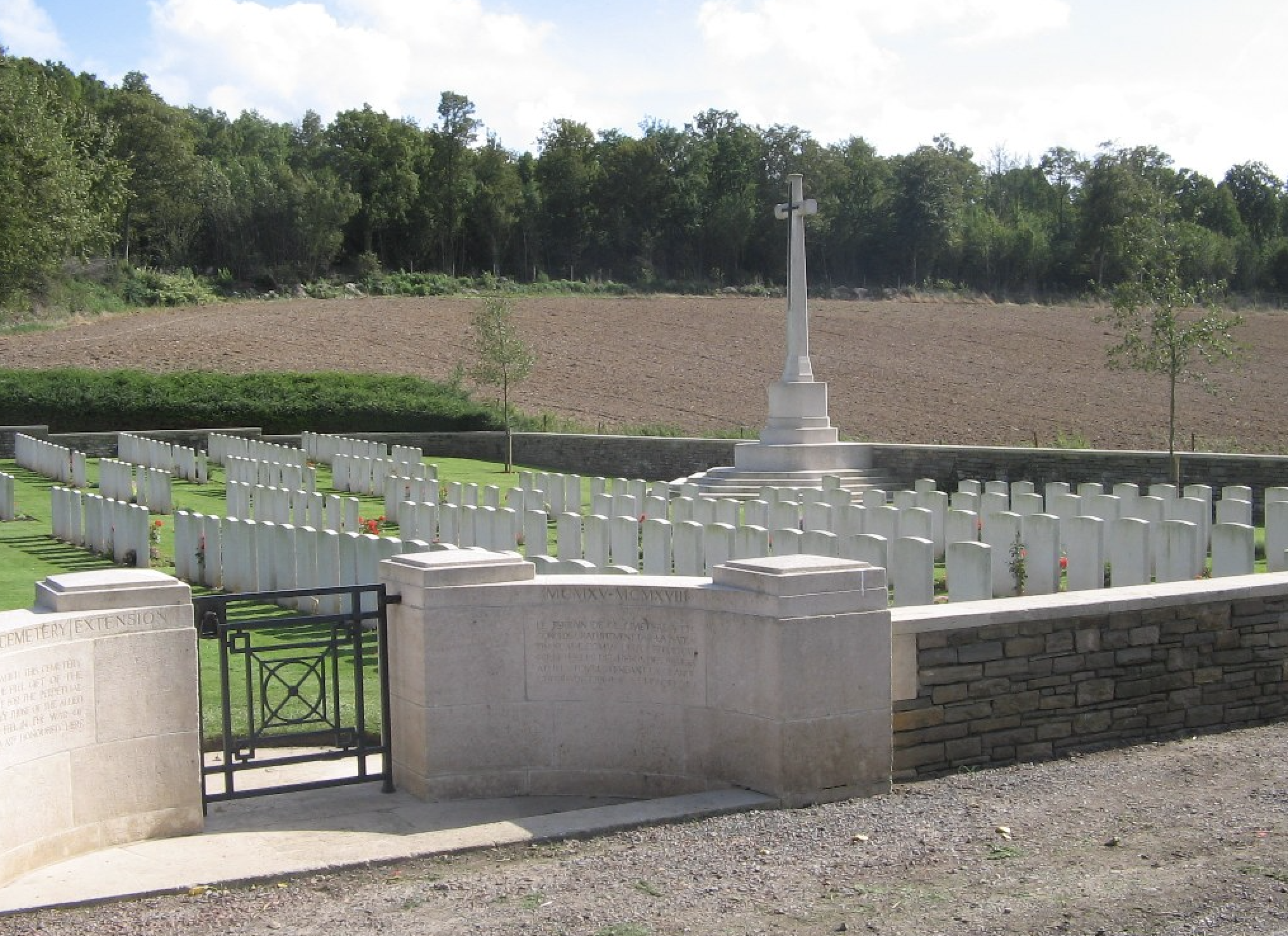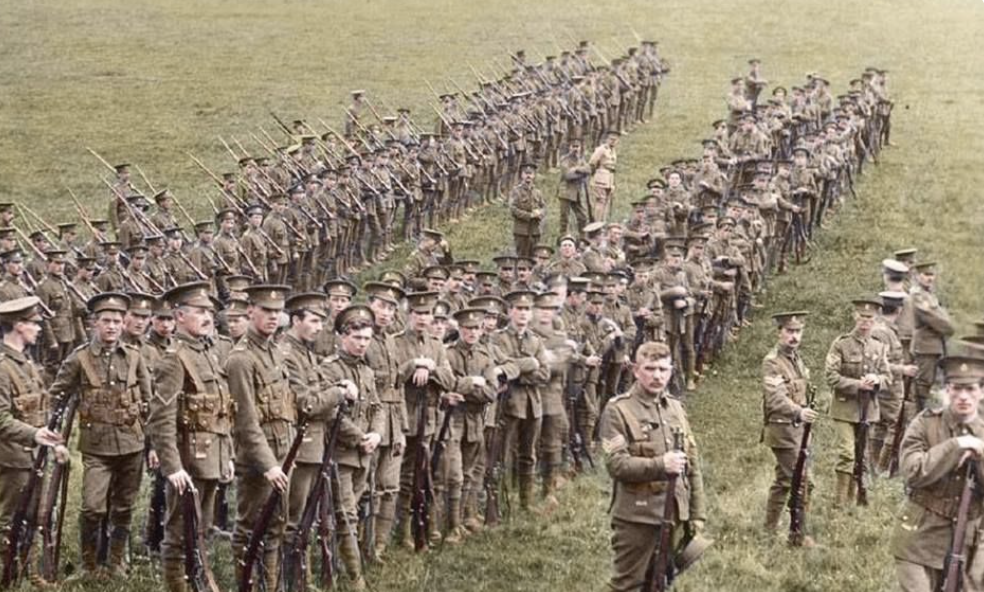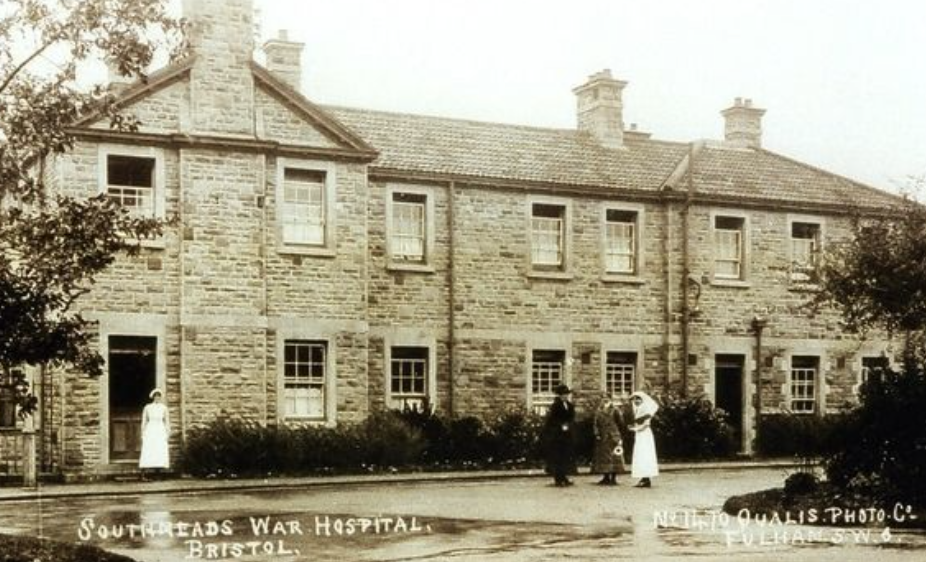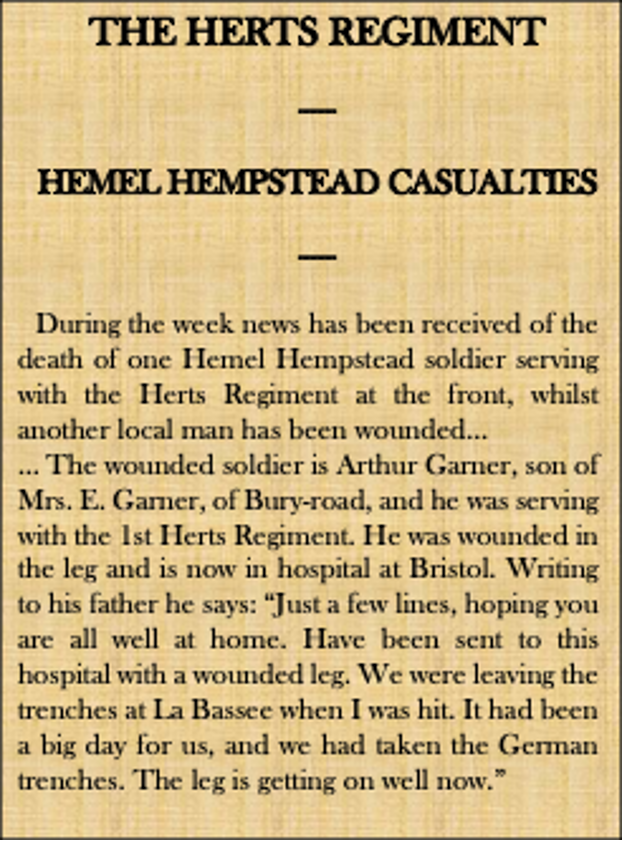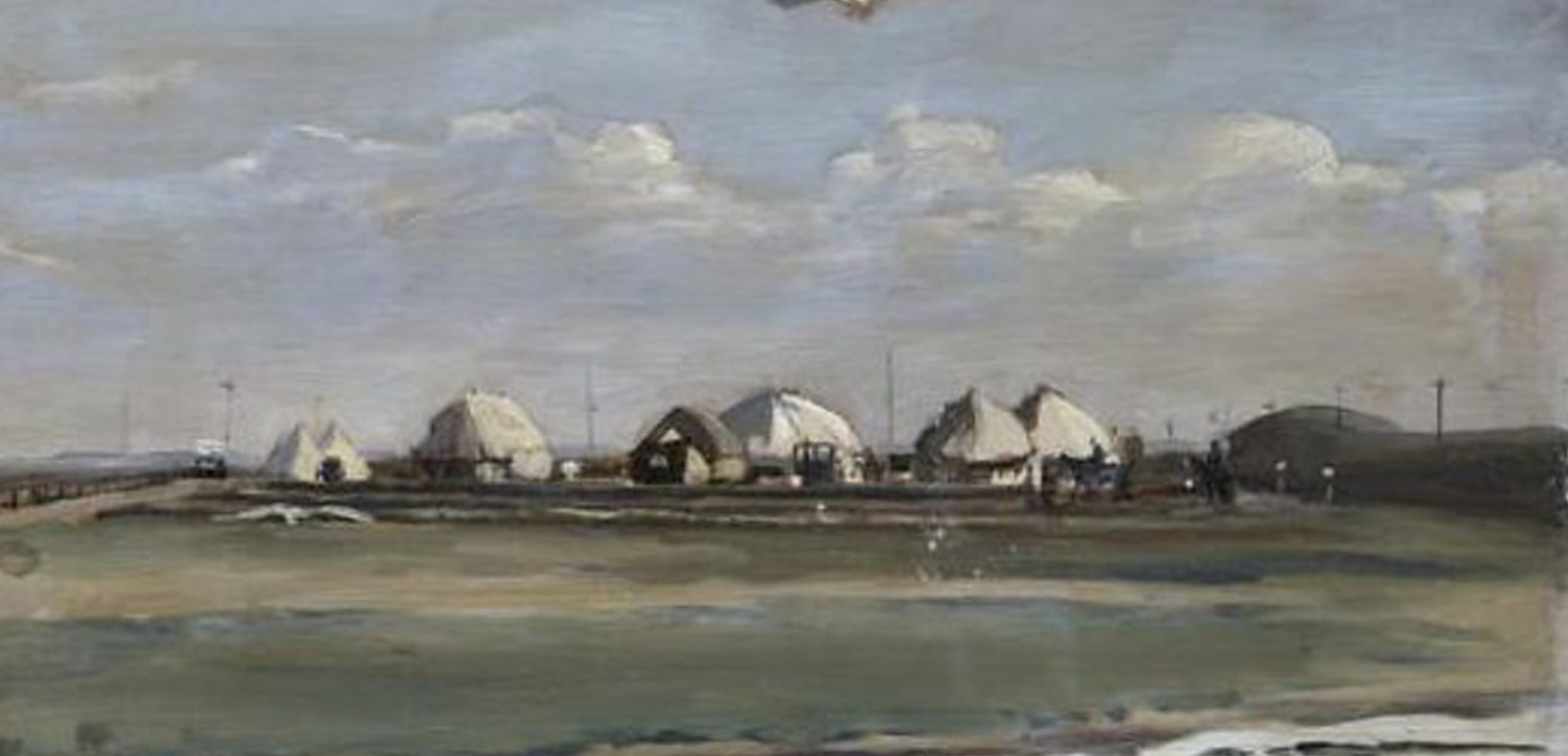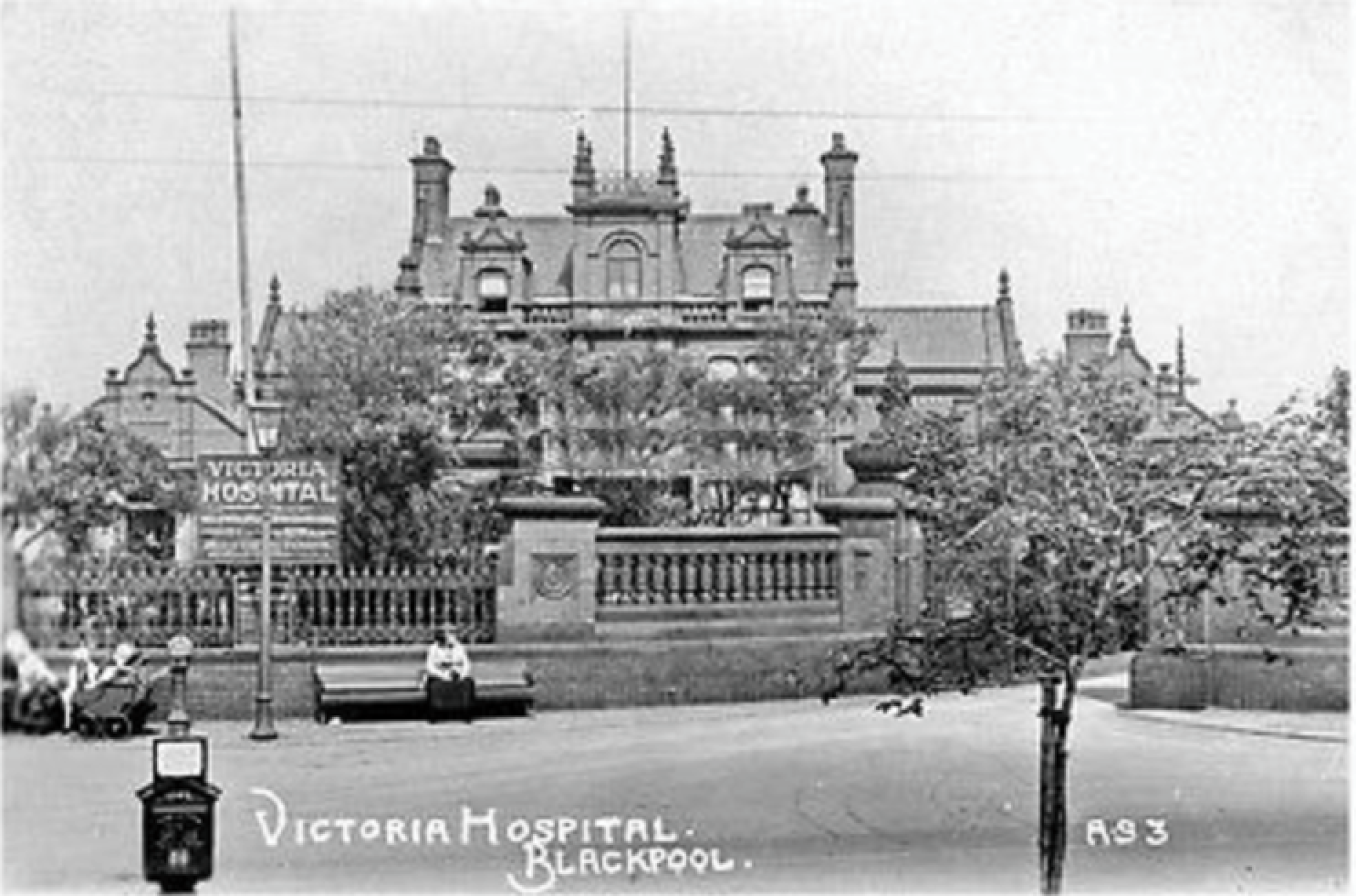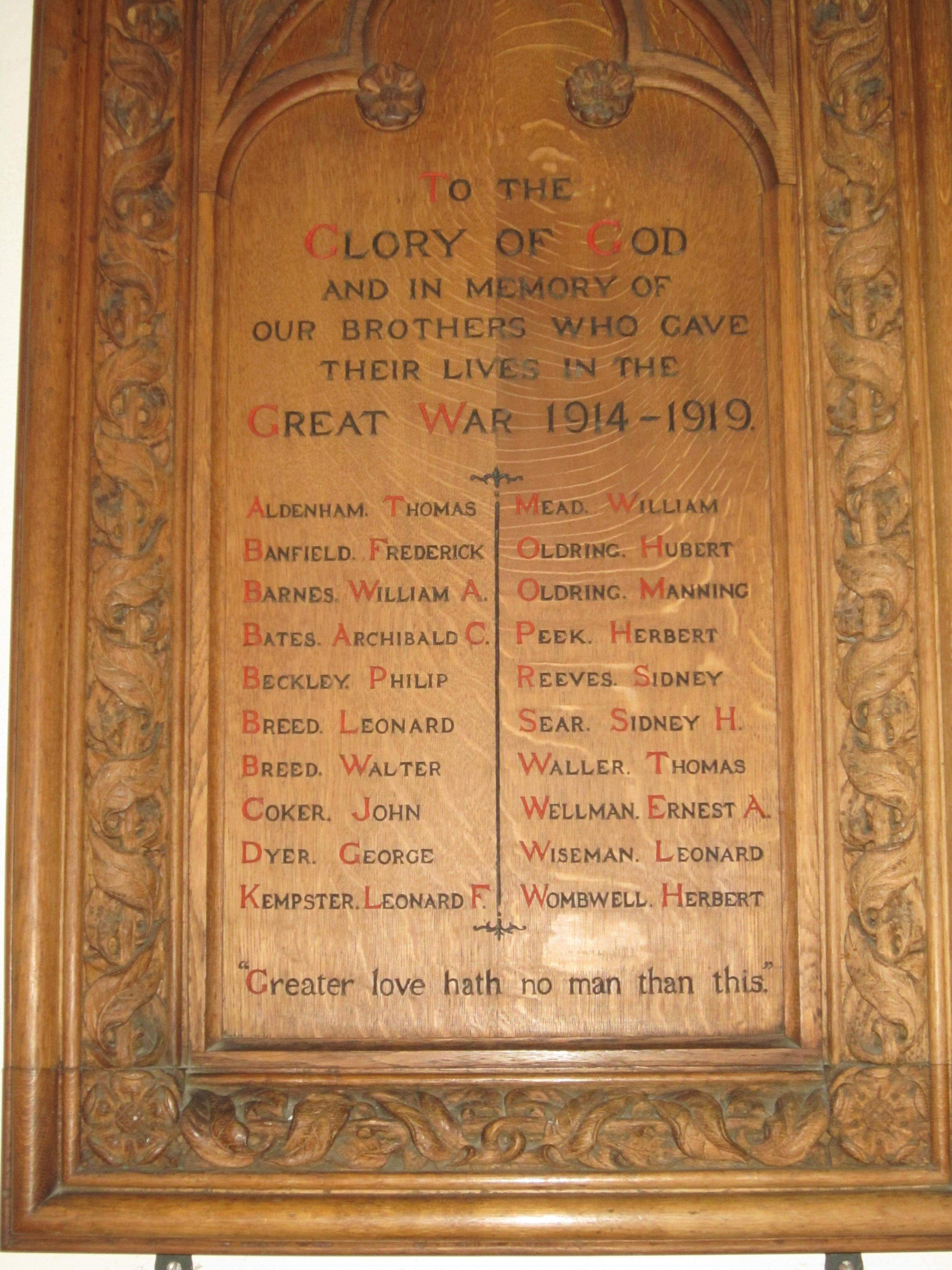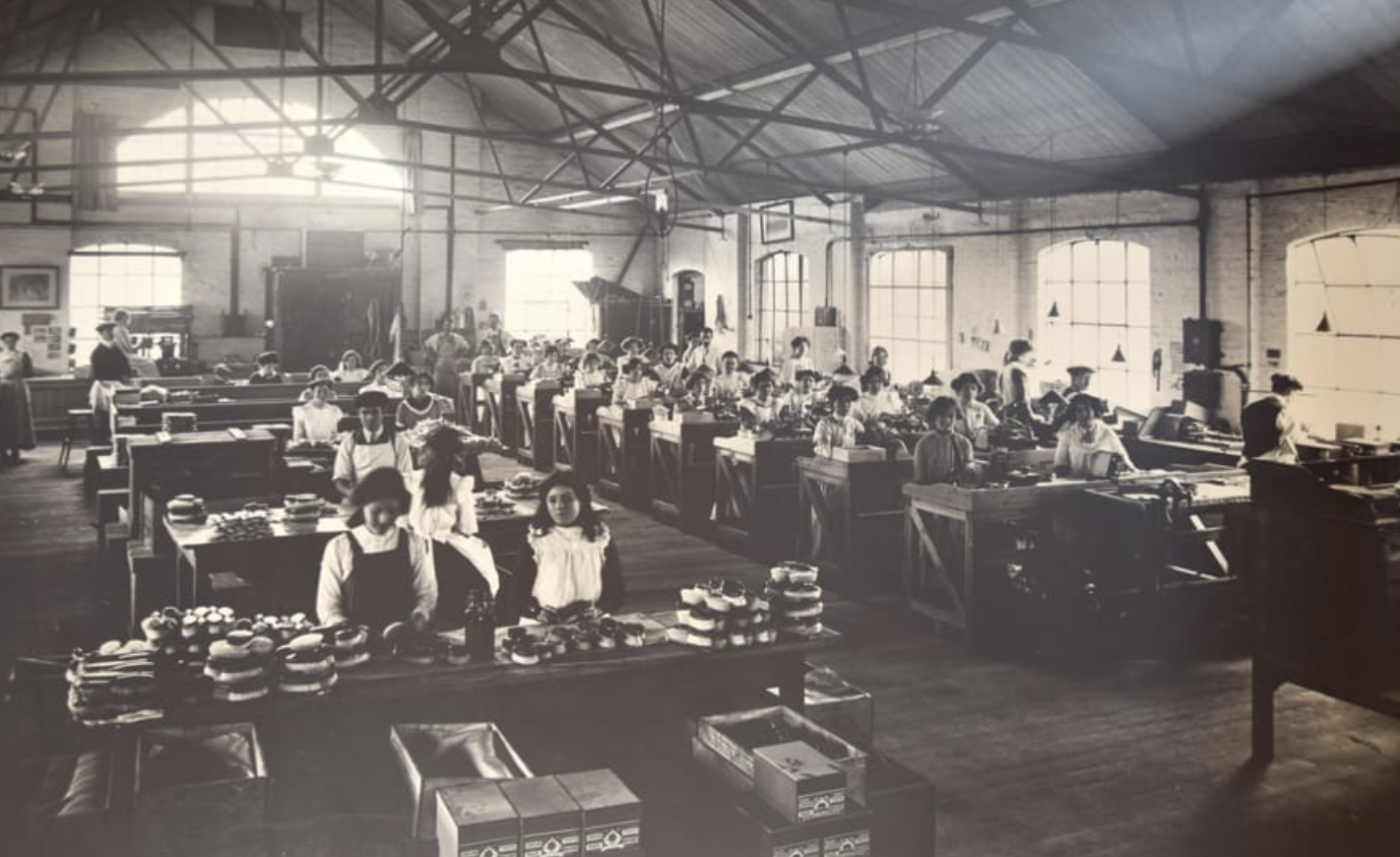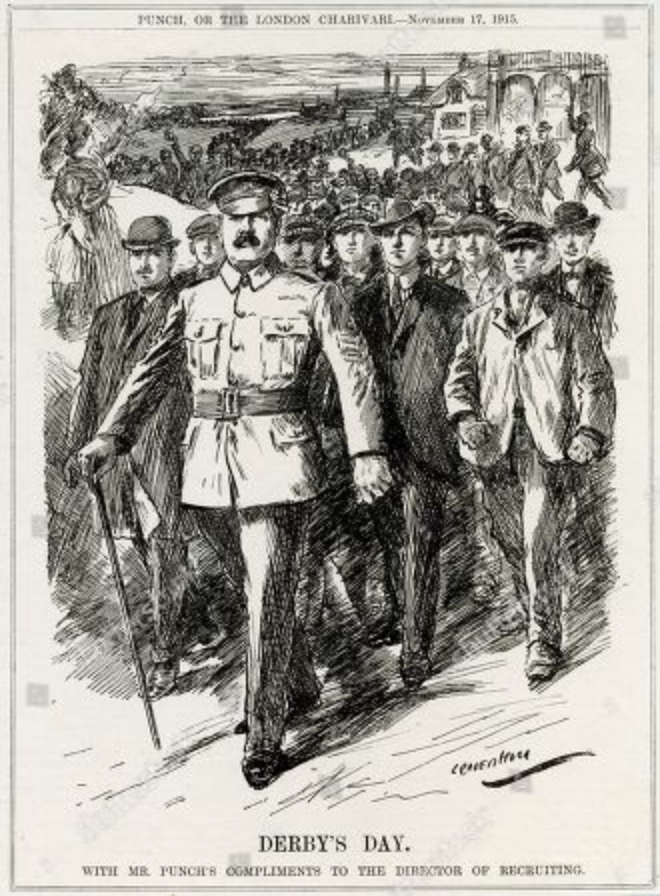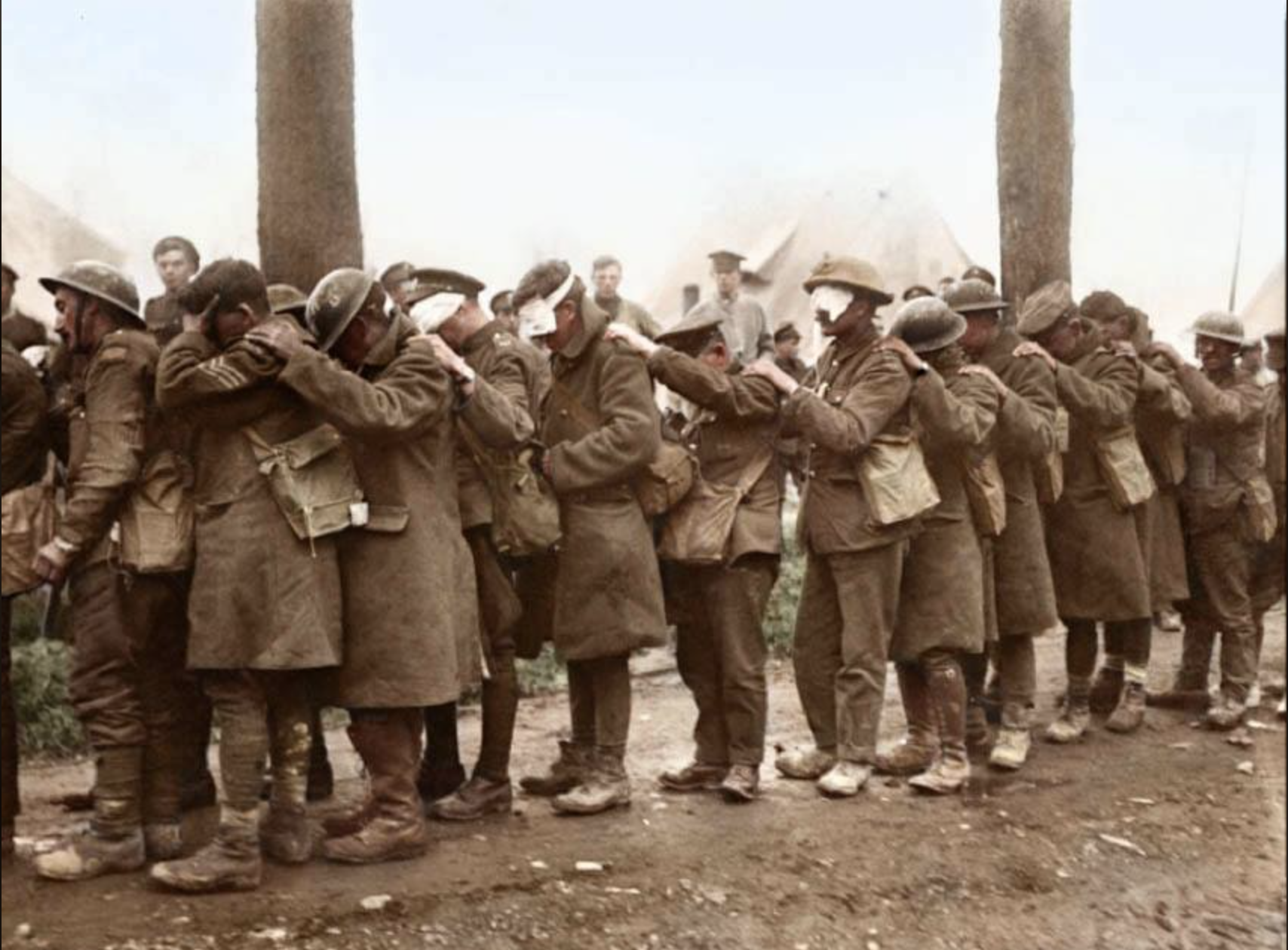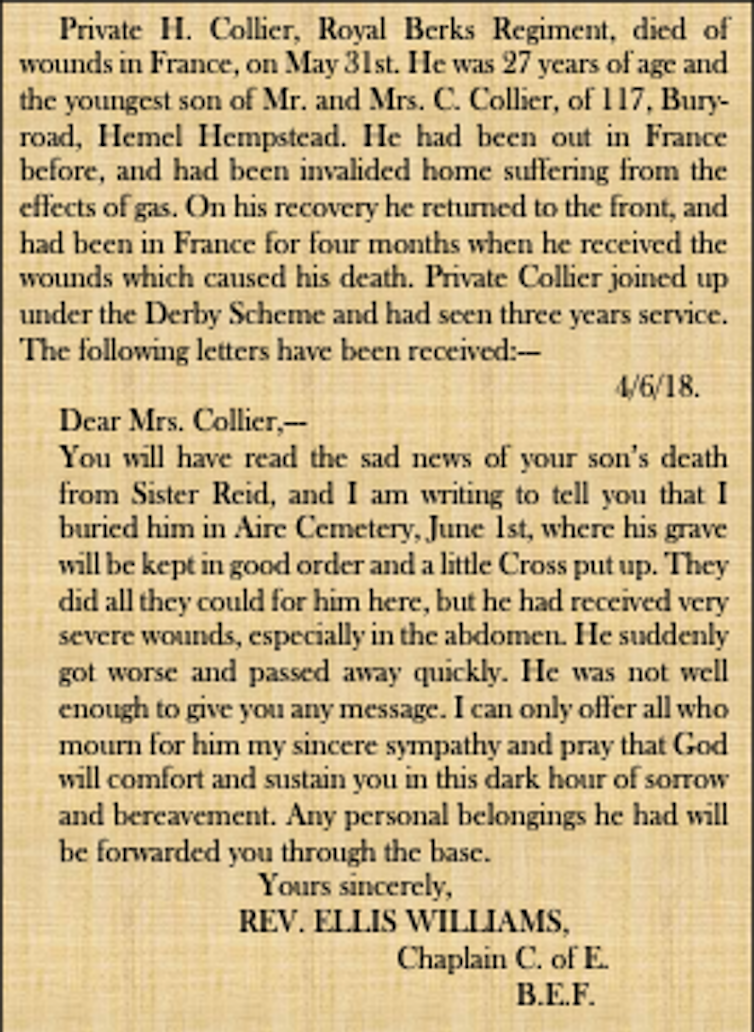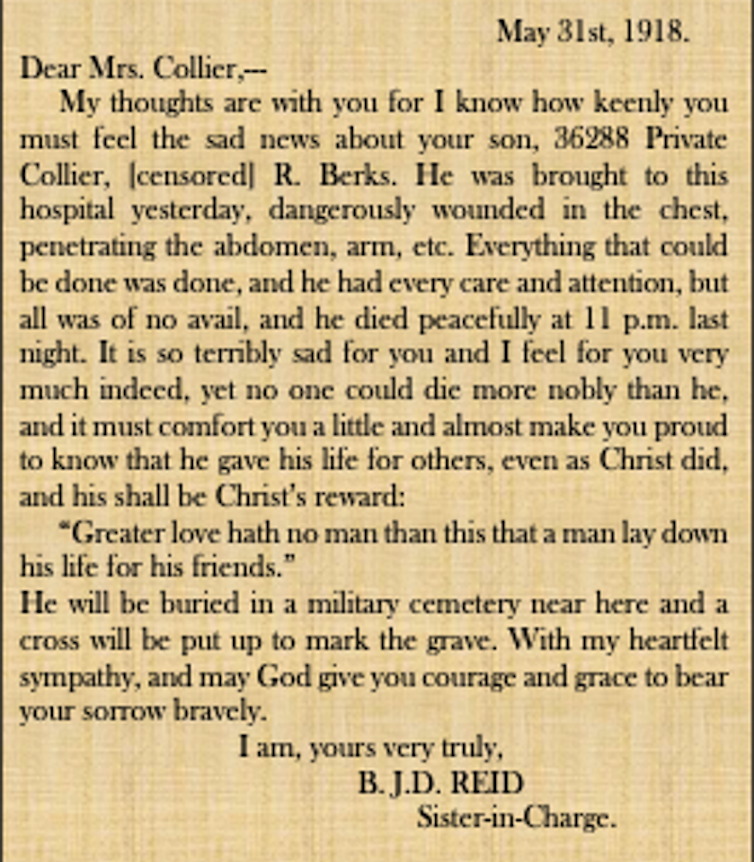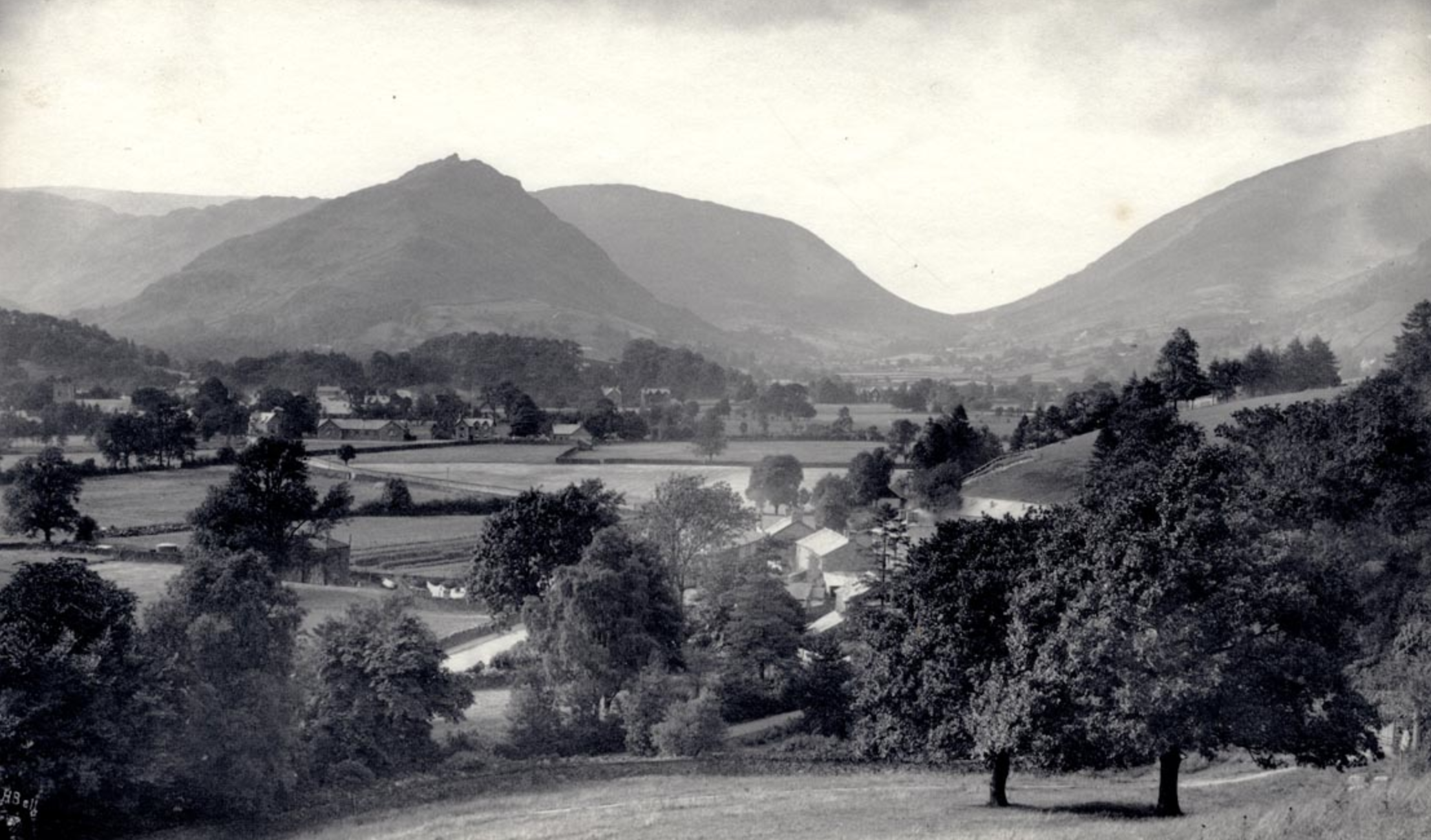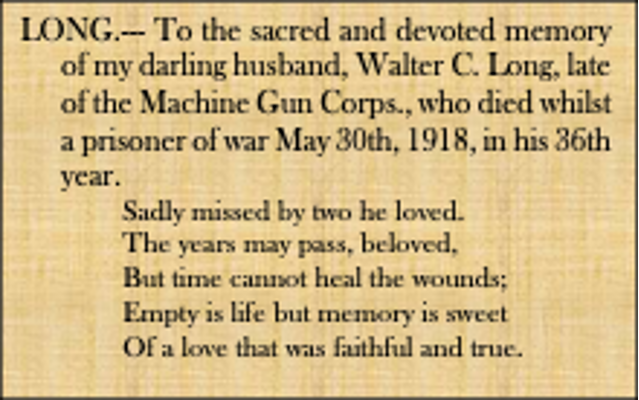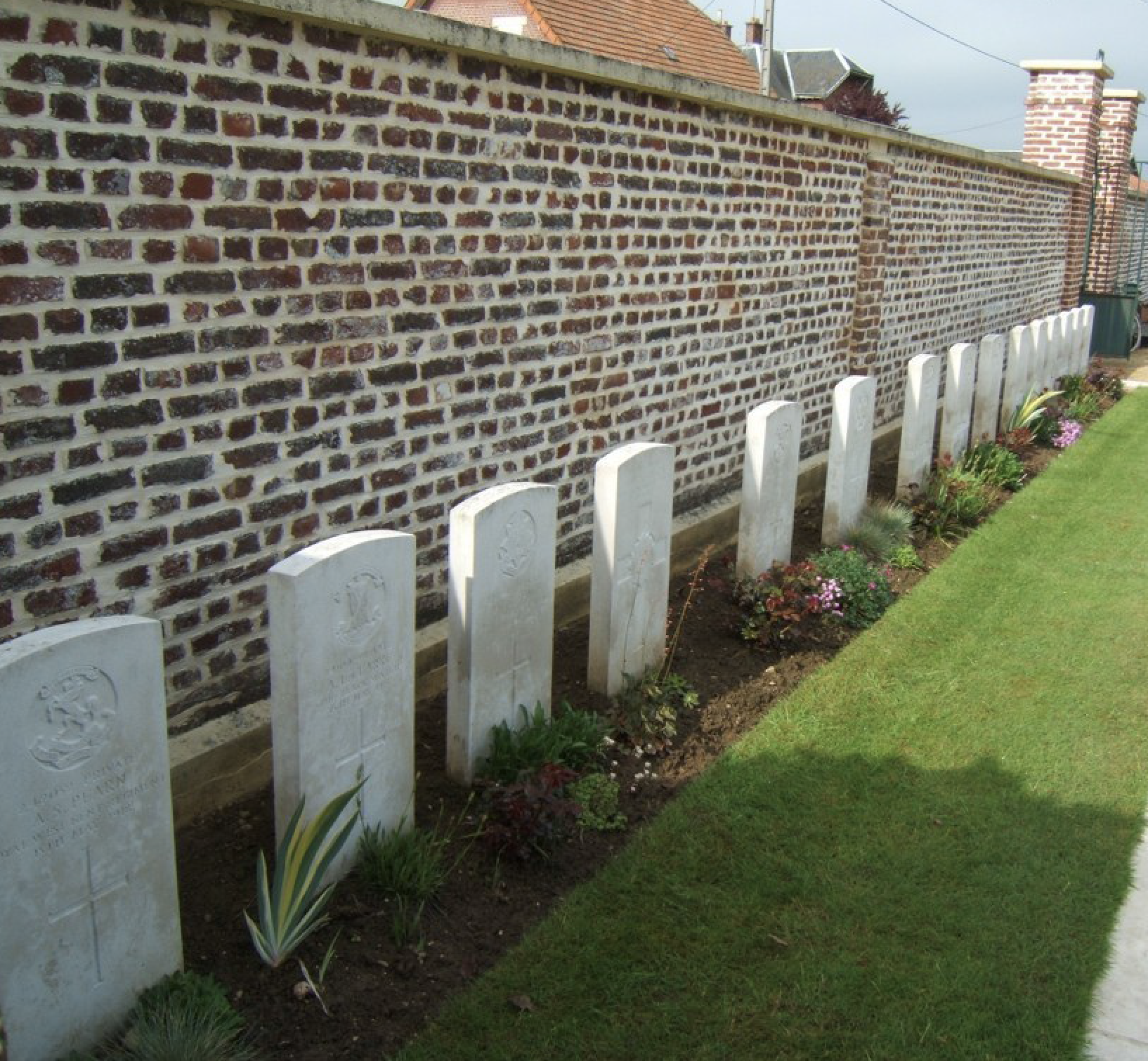Fallen in May 1918:
Bernard Wilfred Wright
Walter Brammer
Henry Thomas Crawley
Joseph Cannone
Jesse Herbert Dagley
Frank Freeman
Leonard Thomas Evans
Arthur Garner
Herbert Peek
Horace Collier
Walter Charles Long
BERNARD WILFRED WRIGHT
Lieutenant
4th Sqdn., Royal Air Force
Killed in Action Saturday, 4th May 1918
Remembered with Honour, Outtersteene Communal Cemetery Extension, Bailleul, Nord, France, Grave IV. B. 1.
Bernard Wilfred Wright was born at 204 High Street, Watford on Tuesday, 24th September 1895 and baptised three months later, at St Mary’s Church in the town on Sunday, 15th December. He was the first of three children born to Robert William Wright and Isabel Sharp and his younger siblings were Hilda born in 1897 and Robert William born in 1900.
His father Robert was a "Coach Builder" and this was the trade that brought the family from Watford to Leverstock Green near Hemel Hempstead around 1902. Robert moved his young family into "Leverstock House", next door the "Leather Bottle" pub which still stands in the village today, although the family home was demolished in the 1960’s. From a workshop next to the house, Bernard’s father built up a successful business as a "Wheelwright", as well as becoming an "Undertaker" and serving on the Parish council.
Bernard went to the local village school before leaving in early 1907 when he went to Callowland Board School on Leavesden Road, North Watford. He remained there until July 1908 when, aged thirteen, he transferred to a Higher Elementary school, which was in fact Watford Grammar, to complete his education. By 1914, Bernard had joined Barclay’s Bank as a trainee and went to work at the Hitchin Branch.
On the outbreak of war, Bernard was still at Hitchin and working as a "Cashier", but a year later, he left his job and went to enlist, on the 13th November 1915 aged twenty. He joined the Royal Fusiliers (City of London) Regiment and was initially posted to the 28th (Reserve) Battalion. The 28th was formed in August 1915 as a reserve battalion, from depot companies of the four Public Schools Battalions.
Within a short space of time, Bernard was promoted Lance Corporal and by June 1916 he was raised to Corporal. He completed his basic training and in September he transferred to "F" Company, 104th Training Reserve Battalion, under the orders of the 24th Reserve Brigade.
He moved to Edinburgh with his new unit but, only two days after his transfer he fell ill with Tonsillitis and was admitted to the 2nd Scottish General Hospital in the city. He was treated for eleven days before being moved to Kelso, on the Scottish Borders where he underwent a further twenty-one days of care before finally being discharged. Shortly afterwards, he fell foul of the military authorities when he was "Absent Without Leave", having overstayed his leave by eighty hours. The resultant charge meant he forfeited four days pay and had any further leave "stopped" for one month.
In early November 1916, Bernard applied for an officer’s commission in the Machine Gun Corp. His application stated his his father was a "Coachbuilder", and that he had been a "Bank Clerk" and could ride a horse. He was accepted for admission to No. 2 Officer Cadet Battalion stationed at Pirbright on the 1st February 1917, where he completed his training before transferring in May, to No. 6 Cadet Battalion based in Oxford.
Bernard trained with the Tank Corps briefly, before being selected in August to train as a pilot with the Royal Flying Corps. He reported to the Military Aeronautics school at Reading just before he was promoted 2nd Lieutenant and began the intensive course of training to become a pilot.
The training was compressed into six weeks and included aerial observation, wireless telegraphy, aneroid barometers, manufacture of engine parts and the use of Lewis guns amongst other skills. On leaving Reading, Bernard moved to 31 Training Squadron, at Wyton Huntingdonshire, then on to 62 Squadron at Swingate Downs, Dover in Kent to complete his training. By the 26th March, 1918 Bernard had qualified as a pilot and prepared to go to France.
During his time at Swingate Downs, Bernard married nineteen-year-old Bessie (Elizabeth) Elford, at All Saints Church, Deptford, London on Saturday, 16th February 1918. It is not known where and when Bernard and Bessie met, but it may have been during his initial posting to the City of London Regiment shortly after he enlisted.
Their time together after they married was sadly brief. On the 1st April Bernard was promoted Lieutenant, on the day the Royal Airforce came into being, and twelve days later he was posted. He joined No. 4 Squadron Australian Flying Corps on attachment, and went to join his unit at Bruay in France.
Just two weeks after his arrival, Bernard flew his first combat mission on the 1st May 1918, although his time in the air was hindered by low clouds and poor visibility. His second and third missions over the next two days suffered from even worse visibility, before he finally saw combat action on the 4th May.
Taking off at 5.30p.m., he was in a small squadron undertaking a bombing patrol but, after only thirty minutes, Bernard and his comrades were engaged in a dogfight with seven German "Albatross" aircraft. Two German planes were shot down and destroyed but 4 Squadron A.F.C. recorded one casualty “Shot down in flames. Last seen at 6-05 p.m.” between Bailleul and Merville.
The unfortunate casualty was Bernard and he was immediately reported missing before being confirmed "Killed in Action" on Saturday, 4th May 1918.
Bernard had spent only three hours and twenty five minutes in the air and of that, only thirty-five minutes in combat. This was a tragically short time even when compared to the average life expectancy of a R.F.C. pilot in the Great War, an appallingly brief eleven days.
Two weeks after he perished, Bernard’s death was reported in the Hemel Gazette. (see extract)
Bernard was commemorated in the order of service at Holy Trinity Parish Church in Leverstock Green during Easter 1919 and his name engraved on the War Memorials in the village and at the local school.
Five months after he died, Bessie gave birth to their only child whom she named Bernard Wilfred Wright in memory of her dead husband.
Bernard is Remembered with Honour in the Outtersteene Communal Cemetery Extension, Bailleul, Nord, France, where he is interred in Grave IV. B. 1.
He was 22 years old when he died.
Bernard was eligible for the British War Medal and the Allied Victory Medal.
2nd Lieutenant Bernard Wright in 1918 (Photo: http://www.lgchronicle.net)
Leverstock Green village school (Photo: http://bacchronicle.homestead.com)
Bernard and Bessie on their Wedding Day in 1918 (Photo: http://www.lgchronicle.net/)
Bernard drew this cartoon just before leaving for active service (Image: http://www.lgchronicle.net)
Extract from The Hertfordshire, Hemel Hempstead Gazette and West Herts Advertiser 18th May 1918
Leverstock Green village War Memorial (Photo: Traquair Photography)
Bernard’s headstone in Outtersteene Communal Cemetery Extension, Bailleul, Nord, France (Photo: Traquair Photography)
WALTER BRAMMER
153999 Fitter
"D" Bty. 11th Bde., Royal Field Artillery
Killed in Action Monday, 6th May 1918
Remembered with Honour, Godewaersvelde British Cemetery, Nord, France, Grave I.S.15.
Walter Brammer was born in Kendal, Westmoreland, on the edge of the Lake District in 1887. He was the second son of William Brammer and Jane Harton who had four children together who were: Arthur, Walter, George and Agnes. His father William died in January 1916 aged sixty three and his mother Jane succumbed to breast cancer one year later, on the 27th January 1917 aged sixty-one, a short time before Walter married.
Walter’s younger brother George also served in the Great War and survived the conflict.
His father William was a "Boot Riveter" and in the mid-1890s moved the family to Leeds, where he had been born, and where there was more work. By 1901 Walter had left school and started work as an "Iron Moulder" but he left this job and enlisted with the Army as a professional soldier when he was sixteen-years-old in 1903.
He chose to join the 18th (Princess Mary’s Own) Hussars, renamed Queen Mary's Own in 1910 to mark Mary’s coronation as Queen Consort to George V. The 18th Hussars were a reformed regiment, local to Leeds, and Walter signed up for twelve years’ service.
His basic training took place in and around York, until he moved to Ireland with the Regiment in October 1907 to take up garrison duties at The Curragh. Walter was in Dublin until August 1910 when the Regiment moved once again, this time to Bulford Camp in Wiltshire to take part in training manoeuvres on Salisbury Plain.
The training was briefly interrupted on July 21st 1911 when a section comprising nine Officers, 215 N.C.O. and men along with 211 horses was dispatched to Bristol to stand ready to aid civil powers in connection with the dock strike in Cardiff. This came to nothing and the unit returned to Bulford.
By the Summer of 1914 the 18th Hussars were still at the "Home Station" of Tidworth, but all this was to change with the declaration of war on the 4th August when orders to mobilise immediately were received. On the night of the 7th August, the Commanding Officer received a telephone message to say that Her Majesty the Queen intended to come to Tidworth the next day to bid farewell to "Her Regiment" before its departure to France. The visit took place and following an address to the assembled ranks, every man received a pipe and tobacco as a parting gift from Queen Mary.
On the 16th August, Walter set sail from Southampton with his unit and disembarked at Boulogne at midnight the following day. By the 21st August the 18th Hussars were in support of the advancing British Expeditionary Force but only four days later the Retreat from Mons began.
Walter, now a Lance Corporal, stood and fought with his comrades at Le Cateau on the 26th August and by the time the action ceased the 18th Hussars has lost 70% of its men and horses. However, despite the heavy losses the regiment fought in the Battle of the Marne and then the first Battle of Ypres before the end of the year.
The beginning of 1915 brought Walter’s twelve year period of service to an end and in February at the point of his discharge, he appeared at a Courts Martial at Dover on the 15th of that month. The charge was "absent without leave" and he was subsequently sentenced to forty nine days imprisonment, indicating the seriousness of the misdemeanour in a time of war.
However, on his release from incarceration, Walter immediately re-enlisted when he joined the Royal Field Artillery as a "Fitter". He was posted to "D" Battery in the XI Brigade which was under the orders of the 3rd (Lahore) Division and in May and June of 1915 he fought in the Battles of St Julien, Aubers and Festubert and survived all three. In 1916 Walter was in action at the Battle of Mount Sorrel and at the Somme until finally fighting at Vimy Ridge with the Canadians in October.
In the Spring or early Summer of 1917, Walter married a widow, Jane Sheppard in Hemel Hempstead and gained a young family, Beryl May and Laurence George, Jane's two children from her previous marriage. It is not known how, when or where Walter and Jane met, but she proves to be his link with the town.
Jane was a widow living at 16 Puller Road in Boxmoor when they were married and was employed at John Dickinson & Co. Limited in Apsley. It seems that Walter may have only spent a few days in Boxmoor before he had to go back to the Front, from where he did not return.
By early 1918 "D" Battery was south of Poperinghe in the Godewaersvelde sector and during action in early May suffered heavy casualties. Walter was one of the unfortunate men who died during the fighting.
He was killed in action on Monday, 6th May 1918.
His wife Jane never remarried and continued to work at Dickinsons as a "Supervisor of Envelopes" until she retired in 1944. She lived on Pullar Road for the rest of her life and died there in 1968.
Walter is Remembered with Honour in the Godewaersvelde British Cemetery, Nord, France, where he is interred in Grave I.S.15. The inscription on his headstone, requested by his wife Jane, reads: “NEVER FORGOTTEN”
He was 30 years old when he died.
Walter was eligible for the 1914-15 Star, the British War Medal and the Allied Victory Medal.
The Curragh Camp in Dublin where Walter was garrisoned early in his Army career (Photo: https://irishpostcards.wordpress.com)
Tidworth Camp, Salisbury Plain, Walter's last posting before he went to war (Photo: https://www.birtwistlewiki.com.au)
The retreat from Mons began only four days after Walter arrived at the front (Photo: http://www.radcliffeontrentww1.org.uk)
A Battery of the RFA in action in the Great War (Photo: https://ossett.net)
Walter’s headstone in Godewaersvelde British Cemetery, Nord, France (Photo: https://www.findagrave.com - Lady Linda)
HENRY THOMAS CRAWLEY
2nd Lieutenant
4th Bn., Worcestershire Regiment
Died of Wounds Monday, 6th May 1918
Remembered with Honour, Cinq Rues British Cemetery, Hazebrouck, Nord, France, Grave C.14.
Henry Thomas Crawley was born in Bethnal Green, Middlesex on Friday, 20th April 1883, the eldest son and child born to Henry Thomas Crawley and Maria Susannah Brewster. He had six siblings Maria Matilda, Robert, Elizabeth, Caroline Sarah, Emma (Emily) Sarah, George and Frank. His brother Robert died in 1886 aged one.
Henry attended nearby Globe Road School in Bethnal Green which he left in 1896 when he went to work in the brush making trade, and trained as a "Bone Sawyer and Cutter". It was this work which eventually brought him to Hemel Hempstead, when he came to work at G. B. Kent & Sons River Gade brush works in Apsley and moved into "Ivy Cottage" on Durrants Hill with the Howell family.
Shortly after the outbreak of war on the 14th September 1914, Henry went to the recruiting office at 208 Mare Street, Hackney, where he attested and enlisted with the Hampshire Regiment. He was thirty-one years old and much taller than average at 5 feet 11½ inches and weighing in at 12st exactly.
He went to train in Winchester before he was posted to the 11th (Service) Battalion (Pioneers) Hampshire Regiment and it seems both his age and experience proved valuable to his regiment. Beginning on the 23rd September 1914, Henry rose rapidly through the ranks, until he was promoted Regimental Serjeant Major on the 5th July 1916.
He had gone to France in December 1915 and during the next twelve months the Hampshires were deployed in the Somme Valley. Henry saw his first serious action in September in the Battle of Guillemont followed almost immediately by the Battle of Cinchy, both battles part of the Somme offensive as it entered its final phase.
Shortly afterwards Henry successfully applied for a commission and he returned to England in late December 1916. On the 7th February 1917, he transferred to the 10th Officer Cadet Battalion and went to Gailes Camp, two miles north of Troon in Ayrshire, to start his officer training. Henry spent four months there before he was promoted 2nd Lieutenant. He was posted briefly to the 6th Battalion Worcestershire Regiment at Harwich garrison, before going overseas again to take up his new duties with the 4th Battalion Worcestershires in July 1917.
He joined his Battalion in Belgium and in August saw action again in the Battle of Langemarck, part of the Third Battle of Ypres. Two months later in the Battle of Broodseinde, he was one of five officers wounded on the 9th October, when he was hit in the thigh by shrapnel.
This injury resulted in admission to the 10th Red Cross Hospital at Le Treport in France and from there, he wrote to his colleagues at G. B. Kents to describe the circumstances of his wounding. His brief letter was published in the Hemel Gazette. (see extract)
Henry may well have had a visit home while he convalesced, as his return to his regiment was confirmed by an entry in the 4th Battalion War Diaries on the 26th April 1918. Just ten days after his return to the front Henry was wounded when he was hit by retaliatory enemy machine gun fire, following a raid by the 86th Brigade. He was immediately taken out of the line for treatment but sadly, to no avail.
Henry died from his wounds at 89th Field Ambulance on Monday, 6th May 1918.
He was commemorated on the war memorial plaques in St Mary’s Church, Apsley End and at G. B. Kent & Sons Ltd. where he had worked.
Henry is Remembered with Honour in the Cinq Rues British Cemetery, Hazebrouck, Nord, France, where he is interred in Grave C.14. The inscription on his headstone, requested by his father Henry, reads: “HERE IS A LINK DEATH CANNOT SEVER LOVE AND REMEMBRANCE LAST FOR EVER”
He was 35 years old when he died.
Henry was eligible for the 1914-15 Star, the British War Medal and the Allied Victory Medal.
Globe Road School, Bethnal Green where Henry was educated (Photo: https://www.towerhamlets.gov.uk)
G. B. Kent & Sons Ltd. brush works in Apsley where Henry worked (Photo: https://kentbrushes.com/pages/heritage)
Extract from The Hertfordshire, Hemel Hempstead Gazette and West Herts Advertiser 3rd Nov. 1917
Henry Crawley’s headstone in Cinq Rues British Cemetery, Hazebrouck, Nord, France (Photo: CWGC)
JOSEPH CANNONE
31545 Serjeant
2nd Bn., Bedfordshire Regiment
Killed in Action Thursday, 9th May 1918
Remembered with Honour, Tyne Cot Memorial, West Vlaanderen, Belgium, Panel 48 to 50
Joseph Cannone was born on Wednesday, 18th August 1897 in Clerkenwell, London, the oldest child of Italian immigrants, Rosario Cannone and Teresa Grillo. Rosario and Teresa had seven children together who were: Joseph, Angelo (Arthur Michael), Mary (Virgellia Catarina), Louise (Luisella E), Vera (Vellia), Florence Hilda and Harold Reginald.
His father Rosario was recorded on the 1911 Census as an "Itinerant Musician" and it is evident that this occupation meant the family frequently moved to locations where he could find work. The children were variously born on London, Oxford, Leighton Buzzard and finally Hemel Hempstead where the family settled sometime around 1910.
Whilst in Leighton Buzzard his father Rosario took court action against one Anthony Dilorto whom he accused of stealing money from him. The court found in Rosario’s favour although it is not clear if the sum of money was recovered.
Joseph started school in Oxford when he joined St Abb’s School in 1902, before moving to Leighton Buzzard British School when his father brought the family there in 1905. He left the school briefly in 1907 when the family moved to Luton, but only three months later, he was back at school in Leighton Buzzard along with his younger brother Angelo.
When he finally left school in July 1910 aged thirteen, it was with a certificate for perfect attendance, remarkable enough for the time, but more praiseworthy given the frequent disruption to his schooling as a result of his father’s work.
Joseph was soon at work as an "Ice Cream Vendor", perhaps not surprising given his strong Italian heritage. Soon afterwards he joined John Dickinson & Co Limited where he was still working when war broke out.
Too young at seventeen to enlist in August 1914, Joseph had to wait for his eighteenth birthday. However, his patience ran out and he travelled to Bedford in June 1915, two months before his birthday and enlisted with the Bedfordshire Regiment.
It is not known when he went overseas but it was in all likelihood around August 1916 when he was posted to the 2nd Battalion Bedfords and joined his unit at Vignacourt north of Amiens. Just a few weeks after arriving he experienced his first serious action when he fought in the Battle of Transloy on the 12th October. Joseph survived unscathed despite the Division suffering many casualties.
He fought alongside his comrades throughout 1917, starting in the Spring at the First Battle of the Scarpe, before moving to Belgium in May and fighting in the Battle of Messines Ridge in June. The Battle of Pilckem Ridge followed in July which proved to be the last major engagement of the year for the 2nd Bedfords.
By early 1918, Joseph had been awarded promotions and attained the rank of Serjeant just prior to the Battle of St Quentin in March 1918. April brought the Battles of Kemmel and Scherpenberg, early phases of the Battle of the Lys, both of which Joseph survived.
However, his luck was soon to run out, when in the early morning on the 8th May, the 2nd Bedfords came under intense German bombardment which inflicted many casualties. The Battalion War Diaries recorded “7 Officers and 170 Other Ranks” killed, wounded or missing and this number unfortunately included Joseph.
Joseph was confirmed killed the following day, Thursday, 9th May 1918.
Not long after Joseph’s death Rosario, Teresa and their youngest children Vera, Florence and Harold moved back to London where they lived on Jamaica Road, Bermondsey. Rosario went into the Greengrocery business and worked there until retirement.
Joseph was commemorated on the John Dickinson & Co Limited War Memorial at Apsley End where he had worked. He has also been remembered on the recently dedicated memorial plaque at St Mary and St Joseph Church in Boxmoor, where he and his family had worshipped.
The plaque at St Mary and St Joseph is a replacement for the original which was lost and is due to the excellent efforts of Brendan Sheridan, a member of the congregation, whose research has been extremely valuable in relation to not only Joseph’s life, but also the other soldiers from the church who fell in the Great War.
Joseph is recorded as Cannon rather than Cannone on the various war memorials, as well as on his military records. It is possible that he "anglicised" his Italian surname or it was simply assumed to be the English spelling.
Joseph is Remembered with Honour on the Tyne Cot Memorial, West Vlaanderen, Belgium, Panel 48 to 50.
He was 21 years old when he died.
Joseph was eligible for the British War Medal and the Allied Victory Medal.
Beaudesert (Bristish) School, Leighton Buzzard where Joseph had a perfect attendance record (Photos: https://bedsarchives.bedford.gov.uk)
Joseph's certificate for perfect attendance (Image: D.C. Thomson Family History)
Apsley Mills where Joseph went to work (Photo: http://www.hertfordshire-genealogy.co.uk)
Landguard Fort, Felixstowe where Joseph trained before being posted (Photo: http://bedfordregiment.org.uk)
Support trenches at Vierstraat where Joseph fell (Photo: © IWM Q 50450)
St Mary and St Joseph War Memorial Plaque (Photo: Traquair Photography)
Tyne Cot Memorial, West Vlaanderen, Belgium (Photo: CWGC)
JESSE HERBERT DAGLEY
56950 Private
15th Bn., Lancashire Fusiliers
Killed in Action Thursday, 16th May 1918
Remembered with Honour, Cabaret-Rouge British Cemetery, Souchez, Pas-de-Calais, France, Grave VIII. O. 12.
Jesse Herbert Dagley was born in Greenwich, London in June 1899, the first child born to Herbert Henry Dagley and Elizabeth Cranfield. Jesse had two younger sisters, Constance Cissie and Lily.
When Jesse was born his family lived on Armada Street in Deptford and his father Henry worked as a "Stoker", possibly in the nearby Deptford power station, which is regarded as the first central high-voltage power station in the world.
At the time of the 1911 Census, Jesse and his two sisters were living with their Grandparents, Henry and Ann, on Cotterells Road in Hemel Hempstead and all three were at school. When Jesse left school in 1912, he immediately went to work with John Dickinson & Co. Limited at Apsley Mills.
He was still at Dickinsons when war broke out the following year. He was still underage at fifteen and unable to enlist until he reached his eighteenth birthday in June 1917. As soon as he was eligible, Jesse went to Watford to attest and enlisted with the Bedfordshire Regiment.
Once he had completed his basic training, he was sent overseas where he was transferred to the 10th Battalion Lancashire Fusiliers. Almost immediately afterwards Jesse transferred again, this time to the 15th Battalion in the same regiment.
The exact date of his arrival in France is not known, but it was likely to have been between the 6th and 11th April 1918, when according to the 10th Lancashires War Diaries, it received “7 Officers and 441 OR reinforcements…” from a variety of other regiments including the Bedfordshires.
The 15th Lancashires were close to Arras when Jesse joined and within days he was in the trenches as the Battalion engaged in relief duties. On the 16th May the Battalion War Diaries recorded the following: “In trenches. About 9.0am enemy raided two of our posts held by B Coy. 6 of our men are missing…” It was during this attack that Jesse was killed although it is unclear if he was one of the six men mentioned.
Jesse died on Thursday 16th May 1918. He had been if France for just over one month when he died.
He was commemorated on the John Dickinson & Co. Limited War Memorial in Apsley End where he had worked.
Jesse is Remembered with Honour in Cabaret-Rouge British Cemetery, Souchez, Pas-de-Calais, France where he is interred in Grave VIII. O. 12.
He was only 19 years old when he died.
Jesse was eligible for the British War Medal and the Allied Victory Medal.
Armada Street, Deptford where Jesse was born (Photo: Public Domain)
Cotterells Road (now Cotterells) where Jesse lived with his Grandparents (Photo: Public Domain)
John Dickinson & Co. Limited War Memorial, Apsley End (Photo: Traquair Photography)
Cabaret-Rouge British Cemetery, Souchez (Photo: CWGC)
FRANK FREEMAN
31149 Private
101st Company Labour Corps
Died of Wounds Thursday, 23rd May 1918
Remembered with Honour, St. Sever Cemetery Extension, Rouen, Seine-Maritime, France, Grave Q. III. N. 14.
Frank Freeman was born in Eaton Bray, Hertfordshire on Monday, 14th June 1880 and baptised at St Mary’s Church in Watford on Friday, 8th June 1888. He was the third child of William Freeman and Sarah How who had a large family of thirteen children who were: Mary Ann, Herbert, Frank, Alice, Harry, Emma, Ann, Frederick, Ellen, Elizabeth, Kate (who died at birth), Kate (named for her sister) and William.
Frank’s father William was a ‘Shepherd’ and moved frequently to find work, resulting in the children being born in various places across the county of Hertfordshire. By 1891 the Freeman family had settled in Bushey, Hertfordshire and it was from here that Frank left school and went to work in 1893. He joined a gas company and is listed as a "Gas Factory Labourer" on the 1901 census along with his landlord George Thorpe. It is likely that they both worked for the Watford Gas and Coke Company which, was situated on Lower High Street in the town overlooking the River Colne and only a mile from Bushey.
Ten years later in 1911, Frank was still boarding with the Thorpe family and plying his trade at the Gas Company. His job at the Gas Factory was "starred" or reserved, so on the outbreak of war he continued with his employer until the Group (Derby) Scheme was introduced in late 1915. He attested at Watford on the 10th December 1915 and on the promise of future military service, he was transferred to the Army Reserve.
Frank was mobilised on the 27th March 1916 and posted to the Royal Fusiliers, joining his regiment on the 5th April and almost immediately sent overseas. The reason for this unusually quick posting seems to have been due to Frank’s labouring skills and rather than training as an infantry soldier he was reassigned to the 34th Labour Battalion.
He disembarked at Le Havre on the 7th May and a week later he joined his new unit and by the middle of September 1916 he was deployed in the field. When Army Council Instruction 611 created the Labour Corps in 1917, the 34th Labour Battalion was redesignated 101st Company Labour Corps.
The work that Frank and his labouring colleagues carried out in the field was critical to the success of the war and it was often conducted in the most dangerous of circumstances. Frank would have been frequently within range of enemy guns and snipers and at times may even have had to participate in the fighting.
The men of the Labour Corps worked for very long periods in the field and it would have been a welcome relief for Frank, when he was awarded a period of home leave starting on the 23rd October 1917. He was given eleven days and returned to England to see family and friends but it did not end well.
He overstayed his leave by twenty-four hours and this resulted in the award of seven days "Field Punishment No.2", the equivalent of imprisonment with hard labour and forfeited two days’ pay. To our minds today, this seems a harsh imposition for what might be considered a relatively minor infringement, however, this was deemed essential to discipline in the army at the time.
On the night of the 11th May 1918, the 101st Company was engaged in laying cables in the Fonquevillers area, when it was attacked by German high explosive and gas shells between 7.30 pm and 2.30 am. As a result of this attack, three Officers and 136 OR were seriously wounded, most of whom subsequently died. A further 130 men received hospital treatment for gas wounds.
Frank was one of the unfortunate casualties and despite being taken down the line to a base hospital in Rouen he succumbed to his injuries and died on Thursday, 23rd May 1918.
There is a dreadful irony that Frank should meet his end from the effects of gas injuries given that he had worked for so many years in the gas trade back in England.
Following his death, Frank’s effects including his back pay and War Gratuity were given to Isabella Thorpe who had been named by him as sole legatee of his military will. Indeed Frank had declared Isabella as his dependant even though he had stated his father was his next-of-kin. This gesture may have been his way of thanking Isabella for all the time he had boarded with her and her husband George when living in Bushey.
He was commemorated on the village war memorial in Leverstock Green, Hertfordshire.
Frank is Remembered with Honour in St. Sever Cemetery Extension, Rouen, Seine-Maritime, France, where he is interred in Grave Q. III. N. 14.
He was 37 years old when he died.
Frank was eligible for the British War Medal and the Allied Victory Medal.
Eaton Bray, Bedfordshire where Frank was born (Photo: https://eatonbray.com/news/tag/History)
St. Mary's Church, Watford where Frank was baptised (Photo: http://www.hertfordshire-genealogy.co.uk)
Men of a Labour Corps Company at work (Photo: https://www.forces-war-records.co.uk)
Soldiers blinded by poison gas (Photo: https://www.forces-war-records.co.uk)
Leverstock Green War Memorial (Photo: Traquair Photography)
St. Sever Cemetery Extension, Rouen, France (Photo: CWGC)
LEONARD THOMAS EVANS
82981 Private
7th Bn., Royal Fusiliers
Killed in Action Friday, 24th May 1918
Remembered with Honour, Mesnil Communal Cemetery Extension, Somme, France, Grave I. B. 34.
Leonard Thomas Evans was born in Hemel Hempstead, Hertfordshire in 1880 the first child of Walter Evans and Harriet Buckthorp. Walter and Harriet had seven children together who were: Leonard Thomas, Horace William, Emily, Edith, Alice, Harry and Elsie.
His youngest brother Harry served with the Hertfordshire Regiment and was killed eight months before Leonard in September 1917. His biography also appears on this site. His brother-in-law Horace Lavender, Alice’s husband, fought and survived the conflict.
The Evans family lived at number 47 Chapel Street, Hemel Hempstead where all the children grew up. Leonard’s father Walter worked as an "Iron Moulder" for one of the two foundries in the town, Cranstone Engineering on the High Street or Boxmoor Ironworks on the Marlowes.
When Leonard left school in 1893, he went straight to work as a "Grocer’s Assistant" with Joseph Mead in his shop at 61 High Street. His employer changed in 1912, when Roland Keen took over Mead’s grocery shop which was situated directly opposite St. Mary's Close in the property occupied by The Cochin Indian restaurant today. Roland Keen was a member of a well-known family of butchers and grocers trading in Hemel Hempstead and in the early part of the 20th century they had three separate butchers shops on the High Street as well as being landlords of the White Hart public house. Leonard was still working in Keen's Grocers when he left to join the colours in 1916.
In the late 1890s Leonard met Lily Maria Parrott who lived just a few doors away from the Evans family at 50 Chapel Street, just off the High Street. Lily was born in Hemel Hempstead and left school in 1888 to work as a "Domestic Servant" with Thomas Parslow, a publican in Chipping Barnet, Hertfordshire. She returned to Hemel Hempstead in the mid-1890s and lived with her brother William on Chapel Street. Leonard and Lily soon became sweethearts and they were eventually married in St Paul’s Church, Hemel Hempstead on Wednesday, 5th August 1903.
They set up home in "Spring Cottage" at 20 Church Street and in 1910 their only child Leonard Walter, affectionately known as "Sonny", was born.
Leonard enlisted for service in 1915 under the Group System (Derby Scheme) and on the promise of military service, he was transferred to the Army Reserve to await his call up. This came in May 1916, when he was mobilised and joined the Queen’s Own Royal West Kent Regiment and was immediately posted to the 3rd (Reserve) Battalion at Chatham to undergo basic training.
Six months later he went to France where he disembarked on the 3rd October and was posted to the 6th Battalion Royal West Kents. He arrived with his unit on the 17th or 18th of the month at Montauban and a week later he was in the trenches, shortly before the Battalion moved north to Arras with the 12th Eastern Division.
This was a relatively quiet sector and in December the whole division was moved out of the front line to rest and re-build, following the costly Somme offensive earlier in the year. However, in April 1917 Leonard saw his first serious action when he fought in the Battle of Arras, beginning on the 9th followed quickly by the First Battle of the Scarpe. A few days later he moved up with his unit to relieve the 8th Cavalry Brigade east of Monchy and it was there that Leonard appears to have been wounded.
One of thirty-one casualties, he was taken out of the line and transferred to hospital to recover. It is not known whether Leonard returned to Hemel Hempstead during his recuperation, but it appears that his wounds were not too serious because he was back with his Regiment by mid-June. He returned to a new unit, the 11th Battalion, between the 4th and 11th July, south of Poperinghe in Belgium.
He fought in the Battle of Pilckem Ridge during late July and early August and then the Battle of the Menin Road in late September, surviving both. The 11th Battalion then moved to Italy with the 41st Division in November. This proved to be brief and by the 9th March 1918, the 11th Battalion had returned to France and concentrated around Doullens and Mondicourt.
At the end of April, Leonard was one of 154 men drafted from various regiments, to strengthen the 7th Battalion Royal Fusiliers. Throughout May he was in action in operations around Forceville with his new unit and these reached a climax between the 24th and 26th of the month. It was at this time that Leonard fell whilst defending the lines against an enemy attack.
He was Killed in Action on Friday, 24th May 1918.
Shortly after his death a report was published in the Hemel Hempstead Gazette. (see extract)
A year after his death his wife Lily remembered him in the Gazette with an entry "In Memoriam". (see extract)
Lily never remarried and died in 1961 aged eighty-six.
He was commemorated along with his brother Harry on the St Paul’s Church memorial plaque. This was unfortunately lost when the church was demolished in the early 1960’s but, a replacement decorative scoll is on display in the new church at Highfield.
Leonard is Remembered with Honour in Mesnil Communal Cemetery Extension, Somme, France where he is interred in Grave I. B. 34. The inscription on his headstone, requested by his wife Lily, reads: “IN LOVING MEMORY GONE BUT NOT FORGOTTEN FROM WIFE AND SONNY”
He was 38 years old when he died.
Leonard was eligible for the British War Medal and the Allied Victory Medal.
Keen's Grocery store on the right in 1917 where the man in the shop apron is standing (Photo: Russell Owen)
St Paul’s Church on Queen Street where Leonard and Lily married in 1903 (Photo: http://www.hertfordshire-genealogy.co.uk)
Extract from The Hertfordshire, Hemel Hempstead Gazette and West Herts Advertiser 8th Jun. 1918
Extract from The Hertfordshire, Hemel Hempstead Gazette and West Herts Advertiser 24th May 1919
The memorial scroll in St Paul’s Church in Highfield (Photo:Traquair Photography)
Mesnil Communal Cemetery Extension, Somme, France (Photo: CWGC)
ARTHUR GARNER
235576 Private
8th Bn., Leicestershire Regiment
Killed in Action Monday, 27th May 1918
Remembered with Honour, Soissons Memorial, Aisne, Picardy, France, Stone 10B
Arthur Garner was born in Hemel Hempstead on Thursday, 28th March 1894, the second son and third child born to Edward Garner and Louisa Jane Wilton. Edward and Louisa had nine children together who were: Reginald, Lilian, Arthur, Muriel, James, Francis John, Edward, Joseph and Guy Cecil. The oldest son Reginald died just before Christmas in 1894 when he was only four years old.
Arthur’s father Edward was a "Coach Builder" and "Wheelwright" who ran his own business around Cotteralls and Bury Road in Hemel Hempstead. Arthur first attended Bury Mill Road school, before he moved to Boxmoor JMI in 1903, which he left in February 1908 aged thirteen, to start work as a "Gardener". Not long afterwards, he joined his father in the coach building business and by 1911, he was recorded as an "Apprentice Coachbuilder".
It appears that Arthur had enlisted with the Hertfordshire Regiment as a Territorial soldier before the outbreak of war. This meant that he was mobilised immediately war was declared and he went overseas with the 1/1st Battalion Hertfordshire Regiment on the 6th November 1914, as part of the British Expeditionary Force.
His time at the Front was brief however, and in early February 1915 he was wounded as the Battalion was leaving trenches at La Bassee, where it was involved in the Winter Actions at Cuinchy. Arthur was wounded in the leg and it was serious enough to send him to a base hospital in France, before he was evacuated to England and admitted to the 2nd Southern General Territorial Force hospital at Southmead in Bristol.
He wrote to his father from there and briefly described what had happened. The communication was published in the Hemel Gazette. (see extract)
It is not known how long Arthur’s recovery took, but he may have returned to his unit in France as early as the end of April 1915, when the Battalion War Diaries recorded that “…21 men rejoined the Battalion from hospital.”
Over the next two years, Arthur saw action in some of the most significant battles of the war, fighting in the Somme Offensive in 1916 and then at Ypres and Passchendaele in 1917.
In early 1918, he was with the Battalion as the Germans launched their Spring Offensive in which the 1st Herts suffered huge losses. The depletion of the unit resulted in many of the men being transferred to other regiments as reinforcements and this was Arthur’s fate.
In early May he was posted to the 8th Battalion Leicestershire Regiment which was in the same Division as the Hertfordshires. Just a few weeks after this move, he was in the trenches just to the south of Reims, on the eastern bank of the Aisne-Marne Canal when the Germans laid down a heavy bombardment with gas shells on the 8th Leicesters position. This continued until the morning of the 27th and it was during this action that Arthur died.
Arthur was Killed in Action on Monday, 27th May 1918.
He was commemorated on the war memorial plaque in St John the Evangelist church in Boxmoor, where he and his family had worshipped.
Arthur is Remembered with Honour on the Soissons Memorial, Aisne, Picardy, France, Stone 10B.
He was 24 years old when he died.
Arthur was eligible for the 1914-15 Star, the British War Medal and the Allied Victory Medal.
1st Battalion Hertfordshire Regiment at Summer Camp in 1914 immediately before the outbreak of war and mobilisation (Photo: Cynthia Marsh)
2nd Southern General Hospital, Southmead, Bristol where Arthur recovered from his wounds (Photo: Alan Marshall)
Extract from The Hertfordshire, Hemel Hempstead Gazette and West Herts Advertiser 20th Feb. 1915
Soissons Memorial, Aisne, Picardy, France (Photo: CWGC)
HERBERT JOHN PEEK
112438 Private
Royal Army Medical Corps
Died of Illness Wednesday, 29th May 1918
Remembered with Honour, Heath Lane Cemetery, Hemel Hempstead, Hertfordshire
Herbert John Peek was born in Hemel Hempstead, Hertfordshire in early summer 1892, the only child of John Peek and Annie Maria Gurney.
Herbert’s father John was from Apsley and had left school to work as a "Bricklayer’s Labourer" but, this all changed when he married Annie Maria Gurney in 1890. The Gurney family ran a laundry and John Peek started working for the business as soon as he was married.
By the time of the 1901 census, when Herbert was eight-years-old, his family lived in Weymouth Street in Apsley and his father was recorded as a "Laundry Proprietor". As soon as he left school, Herbert joined his father’s business and trained as a "Machinist", the job he was still working in when he eventually enlisted for service.
By 1911, the Peek family had moved the business from Apsley and re-located to Cemmaes Terrace in Crouchfield, close to Cemmaes Court and Lockers Park. Shortly after this move, Herbert contracted bronchitis which unfortunately proved to be a chronic affliction. His condition may have been as a result of inhaling fumes from chemicals used in the laundry business, over a prolonged period.
His illness was enough however to initially prevent him from enlisting when war broke out, but despite this he volunteered for service in March 1916, shortly after the Military Services Act was passed in January of that year. He was immediately posted to the Army Reserve and it was not until the 12th April 1917 that Herbert was actually called up and mobilised.
He went to Bedford where he enlisted with the Royal Army Medical Corps (RAMC) and was first posted to the Corps HQ at Blackpool. At the time of his enlistment, Herbert was described as 5 feet 5¼ inches tall, with a chest measurement of 33½ inches, "Poorly" developed and weighing slightly over 7 stones. Despite this and the fact that his medical condition meant he would have been prone to coughing and wheezing, he was passed fit for service.
It must have been apparent immediately upon his arrival in Blackpool that his condition was a potential problem because, within six weeks of joining his unit he was admitted to Victoria Hospital in the town.
It may have been the case that the exertion during his physical training had exacerbated his Bronchitis. Following his admission to hospital and subsequent examination, he was diagnosed with not only asthma and chronic bronchitis, but also cardiac dilation and emphysema. We know this today as Chronic Obstructive Pulmonary Disease or COPD, a progressive and incurable condition and one which at the time was certainly fatal.
Herbert remained in hospital receiving treatment for the next five months until finally, on the 25th October 1917, he was formally discharged from the Army as "…no longer physically fit for war service", and he made his way back to Hemel Hempstead and his family.
Back home, Herbert’s condition progressively worsened, until he was again admitted to hospital in early 1918. He remained in West Herts Hospital in Hemel Hempstead until shortly before his death, which finally came on Wednesday, 29th May 1918.
He was buried in Heath Lane Cemetery in the town on Saturday, 1st June 1918 in a ceremony conducted by the Reverend Percy George, the Minister of Marlowes Baptist Church where Herbert had worshipped. He was commemorated on the Memorial Plaque in the church.
Following his passing, a brief death notice was posted in the Hemel Gazette. (see extract)
Herbert is not commemorated by the Commonwealth War Graves Commission for the simple reason that his discharge from the Army was due to illness that was in no way associated with military service and indeed, had been pre-existing before his enlistment.
This may seem harsh, but it in no way lessens Hebert’s efforts to serve his country, especially given that his physical condition was clearly so dire, that within two years of enlisting he had died of his illness.
He was 26 years old when he died.
RAMC HQ, Weeton Camnp, Blackpool where Herbert was initially posted (Image: https://www.bbc.co.uk)
Victoria Hospital, Blackpool where Herbert was admitted in May 1917 (Photo: Public Domain)
"Cheere House", West Herts Hospital where Herbert died in 1918 (Photo: http://www.hertfordshire-genealogy.co.uk)
Extract from The Hertfordshire, Hemel Hempstead Gazette and West Herts Advertiser 8th Jun. 1918
Marlowes (Carey) Baptist Church War Memorial Plaque (Photo: Kathleen McLeod)
Heath Lane Cemetery, Hemel Hempstead Herbert's final resting place (Photo: Adrian Jones)
HORACE COLLIER
36288 Private
2/4th Bn., Royal Berkshire Regiment
Died of Wounds Thursday, 30th May 1918
Remembered with Honour, Aire Communal Cemetery, Pas-de-Calais, France, Grave II. K. 45.
Horace Collier was born in the Spring of 1890 in Hemel Hempstead, Hertfordshire, the sixth child and youngest son of Charles Collier and Eliza (Elizabeth) Walker, who had a large family of nine children together. The children were: Frederick, Walter, George, Eliza, Bertie, Horace, Rose, Daisy and Emma. Horace’s sister Daisy died in 1918, aged twenty-three and his father Charles a year later in 1919, aged sixty-one.
His oldest brother Frederick, served with the Labour Corps during the war and was twice injured and admitted to hospital, once with a skull fracture incurred when a truck he was loading with 60lb shells overturned and trapped him. Despite these injuries, Fred survived the conflict.
After leaving school in 1903, Horace followed his older brother Bertie into Kent’s Brush Factory in Apsley and soon afterwards they were joined there by their sister Rose. On the 1911 Census, Horace was recorded as a "Box Maker" in a brush factory, but it was also noted that he and Bertie were both "out of work" at the time. The reasons for this note regarding unemployment are not known, nor whether Horace ever returned to work at G. B. Kent & Sons, but it seems he was not there when war broke out, as he was not recorded on the firm’s Memorial Plaque.
Horace enlisted in October 1915 under the Group (Derby) Scheme when he attested at Hertford and where he enlisted with the Hertfordshire Regiment. Following his basic training, Horace was sent to France to join his unit, 1/1st Battalion, and it is most likely that he arrived in April 1916 near Vielle Chapelle.
Horace fought in the Battle of Ancre Heights in October and then in the Battle of Ancre in November, the final action of the costly five month long Somme Offensive. By the end of November, the 1/1st Herts had moved to Belgium and took up position on Canal Bank close to Ypres.
At the end of July 1917, The Battle of Ypres began with fighting at Pilckem Ridge which proved costly for the battalion, although Horace survived. In September, he fought at Menin Road and then Polygon Wood and it seems that it was there, or a month later following the Battle of Passchendaele, that Horace was gassed. The Battalion war diaries recorded that in September "6 ORs – gassed" and again on the 31st October "21, gassed".
Horace and the other wounded men were taken out of the line and he was invalided back to England to recover. The effects of gas poisoning could be fatal if large quantities were inhaled, but when gas attacks occurred warnings were sounded and, on most occasions, soldiers had time to don a gas mask. More often than not, a soldiers gas injuries related to severe blistering of the skin which would partly or completely heal during a period of between six and eight weeks. It seems this was the case for Horace as he was sent back to the Front in January 1918, but this time to a Base HQ to await a new posting.
In February he was posted to his new unit the 6th Battalion Princess Charlotte of Wales’s (Royal Berkshire) Regiment which was almost immediately disbanded. He was then posted to the 2/4th Battalion of the Regiment. Horace joined his new Battalion on the 21st February 1918 along with “…2 Officers and 235 Other Ranks…” as noted in the unit’s war diary.
In late May the 2/4th Royal Berks were in the vicinity of Saint-Venant and over a number of days, its position came under artillery attack from the enemy which resulted in twenty-three men killed or wounded. Horace was one of the unfortunate soldiers to receive wounds and he was admitted to hospital on the morning of the 30th May in a dire condition. Efforts to save him were to no avail and it is clear from reports that his wounds were extensive and fatal.
Horace died in hospital of his wounds at 11pm on Thursday, 30th May 1918.
Horace was interred in a short service conducted by the Battalion Chaplain, Revd. Ellis Williams, on the 1st June.
His mother received two letters in early June describing the circumstances of his death as well as the location of his burial and both were published in the Hemel Gazette shortly afterwards. The letters were written by the Chaplian who buried Horace and the "Sister-in-Charge" in the hospital wher he died, one B. J. D. Reid. (see extract)
Horace is Remembered with Honour in Aire Communal Cemetery, Pas-de-Calais, France, where he is interred in Grave II. K. 45.The inscription on his headstone, requested by his mother Eliza, reads: “GONE FROM US BUT NOT FORGOTTEN”
He was 30 years old when he died.
Horace was eligible for the British War Medal and the Allied Victory Medal.
Kent Brush Factory where Horace worked after leaving school (Photo: https://kentbrushes.com)
Punch Cartoon in 1915 showing Lord Derby and his recruits (Photo: Public Domain)
Soldiers injured in gas attacks being evacuated (Photo: Public Domain)
Extract from The Hertfordshire, Hemel Hempstead Gazette and West Herts Advertiser 15th Jun. 1918
Extract from The Hertfordshire, Hemel Hempstead Gazette and West Herts Advertiser 31st May 1919
Pte. Horace Collier’s headstone (Photo: Traquair Photography)
WALTER CHARLES LONG
126937 Private
Machine Gun Corps (Infantry)
Died of Wounds Thursday, 30th May 1918
Remembered with Honour, Annois Communal Cemetery, Aisne, France, Grave I. B. 20.
Walter Charles Long was born in Grasmere, near Kendal, Westmoreland in late 1882, the third child of Jacob Long and Sarah Jane Hamblen. Jacob and Sarah had four children who were: Alfred William, Alice Elizabeth, Walter Charles and Elsie. His father Jacob died in 1906 aged fifty.
In 1901 Walter was working as a "Draper’s Apprentice" in Kirkby Lonsdale and it was this trade that would eventually bring him to Hemel Hempstead. Before that however, he moved to Oxford to work as a Draper and it was there that he met his future wife, Maude Annie Judd, a farmer’s daughter who lived in the Headington area of the city. It is most likely that Walter and Maude were introduced by one of his work colleagues and Maude’s friend Augusta Burley, a "Draper’s Assistant" who was recorded as a ‘Visitor’ to the Judd household on the 1911 Census return.
Walter married Maude on Monday, 29th June 1914 in St Giles Parish Church in Oxford and at the time he was recorded living on Alexandra Road in Hemel Hempstead and working as a "Draper". The newlyweds set up home at "Scarsdale Villa", 33 Herbert Street in the town and eleven months later on Tuesday, 18th May 1915, Maude gave birth to their only child, a son who they named Eric Walter.
Walter had come to Hemel Hempstead to take up a position with George Rolph who ran a general drapery store at 85 to 89 High Street and shortly after Eric’s birth, Walter attested for military service under the Group (Derby) Scheme. He was unsuccessful however, and his application was rejected for an unknown reason, and he returned to his job at Rolph’s shop.
Following the passing of the second part of the Military Service Act in May 1916, Walter, as a married man, became eligible for call up to the military.
At this point George Rolph as his employer, made an application to the local Military Services Tribunal to seek an exemption for Walter. The appeal and outcome were reported in the Hemel Gazette in July 1916 which describes some confusion, stating that Walter’s rejection papers under the Derby scheme had been lost. This meant that he lacked the evidence to fully support the appeal, but George Rolph claimed that Walter’s call-up would adversely affect his business as he had already lost two men to the War.
This was not an unusual argument and the tribunal committees were often sympathetic to the business owners plight, given that many of them were also local businessmen. Walter’s appeal was adjourned noting that it would be reviewed as and when he was called up for service. However, in early December the Tribunal determined that it was nothing to do with them and dismissed the case, meaning that as soon as his call-up came, Walter would have to enlist.
This finally came in June 1917 and he went to Watford to attest and joined the Bedfordshire Regiment. Almost immediately he volunteered for the Machine Gun Corps and was sent for the specialist training required for an Infantry Machine Gunner at Grantham in Nottinghamshire. When he had completed his training Walter went overseas, but neither the Division nor the location of his posting are known. He probably arrived in France at the end of 1917 or the very beginning of 1918 and what is known is that he fought in the Third Battle of the Aisne.
On the morning of the 27th May 1918, the Germans began a bombardment of the Allied front lines during which the British suffered heavy losses. The bombardment was followed by a phosgene poison gas drop, after which the main infantry assault by seventeen German divisions commenced. Taken completely by surprise and with their defences spread thin, the Allies were unable to stop the attack and the German army advanced through a forty kilometre (twenty-five mile) gap in the Allied lines. They reached the Aisne in under six hours, smashed through eight Allied divisions pushing them back to the river Vesle and also making gains of an extra fifteen kilometres of territory by nightfall.
Just over 50,000 Allied soldiers and over 800 guns were captured by the 30th May, and Walter was among that number. He was evacuated to a prisoner of war camp in Germany and it was there he died almost immediately upon his arrival. The British authorities were unable to confirm Walter’s death until the war was over and finally did so on the 11th February 1919. His cause of death was recorded as “General Weakness and aedema[sic] contracted whilst on active service”. This would have been pulmonary oedema which often resulted from exposure to phosgene gas, which the Germans had dropped on the first morning of the Third Battle of the Aisne.
Walter’s official pension ledger recorded that he died on Thursday, 30th May 1918 in Germany.
His body was taken from the prisoner of war camp and returned to the location of the last battle he fought in, and where he was interred along with sixty other men in a small, peaceful cemetery in the village of Annois, France.
On the anniversary of his death, his wife Maude posted a touching tribute "In Memoriam" in the Hemel Gazette. (see extract)
He was 36 years old when he died.
Walter was eligible for the British War Medal and the Allied Victory Medal.
Walter's birthplace Grasmere in Westmoreland (Photo: http://www.lakesguides.co.uk)
St. Gile's Church in Oxford where Walter and Maude were married (Image: http://www.oxfordhistory.org.uk)
George Rolph’s shop (extreme left) where Walter worked (Photo: Time's Highway. The High Street, Hemel Hempstead. Past, Present and Future, Elizabeth Butteux, Dacorum Heritage Trust, 1998)
Belton Park, Grantham where Walter trained with the MGC under construction in 1914 (Photo: https://www.nationaltrust.org.uk)
Poison gas attack using gas cannisters (Photo: https://upload.wikimedia.org)
Extract from The Hertfordshire, Hemel Hempstead Gazette and West Herts Advertiser 31st May 1919
Annois Communal Cemetery, Aisne, France (Photo: CWGC)
